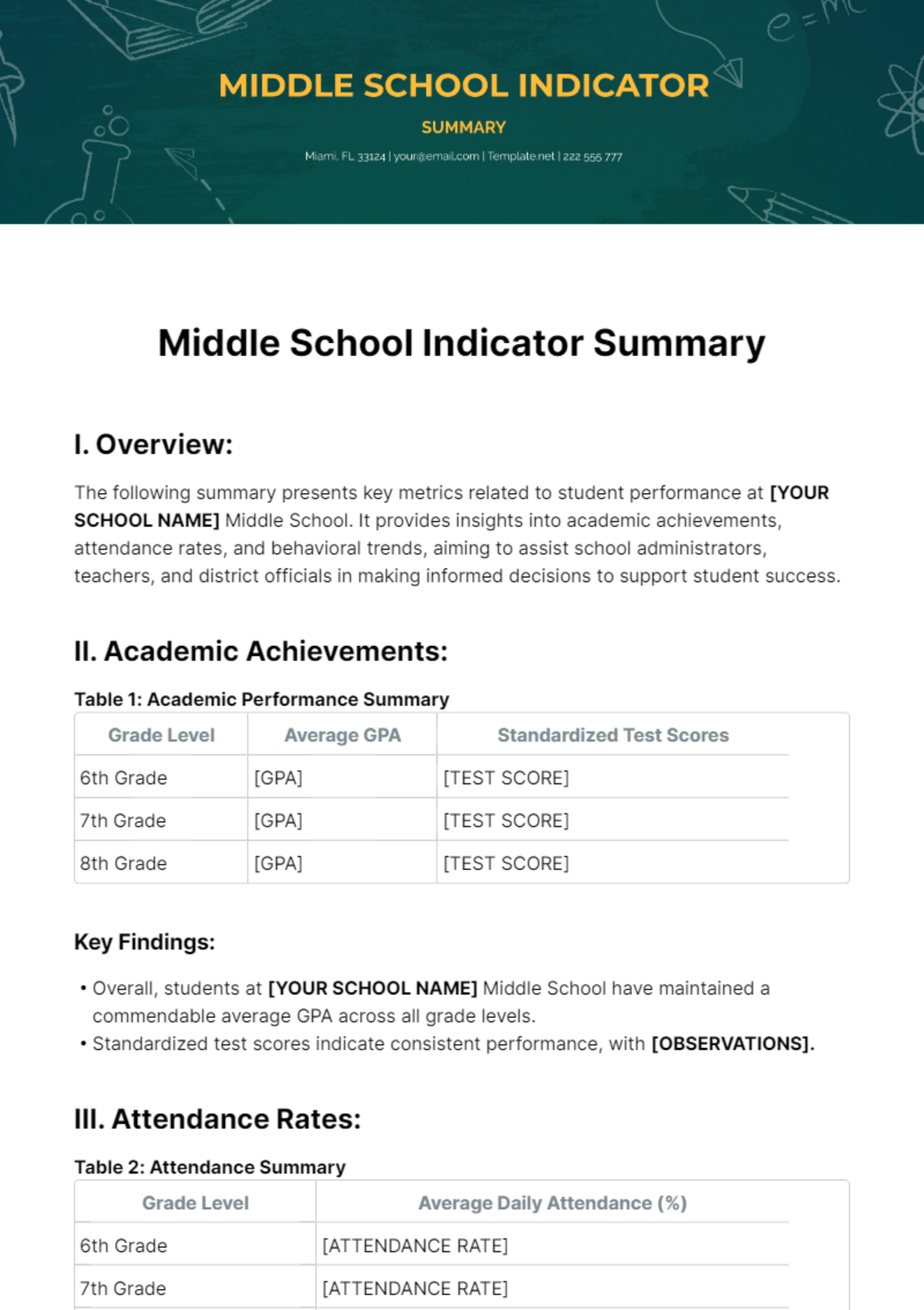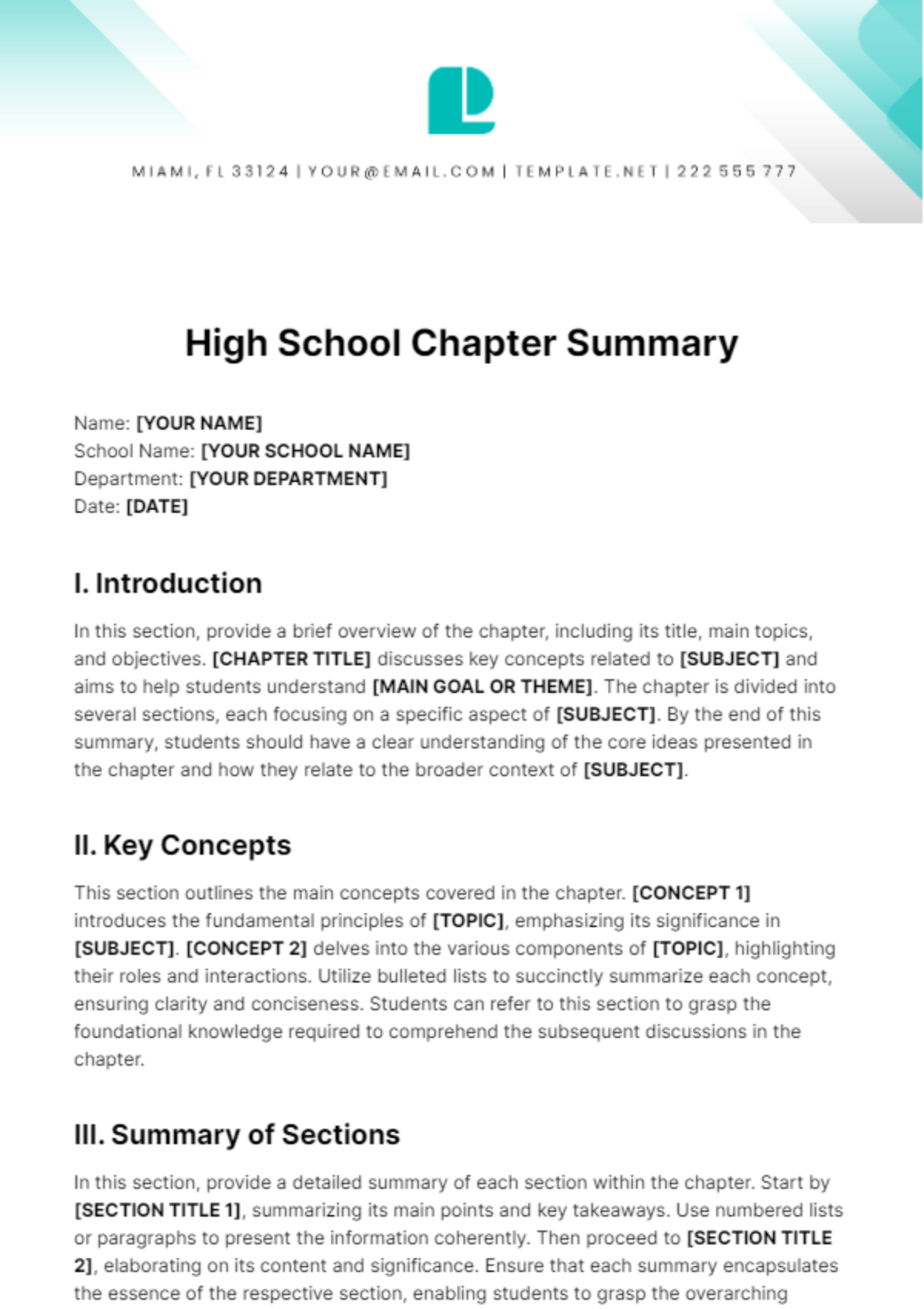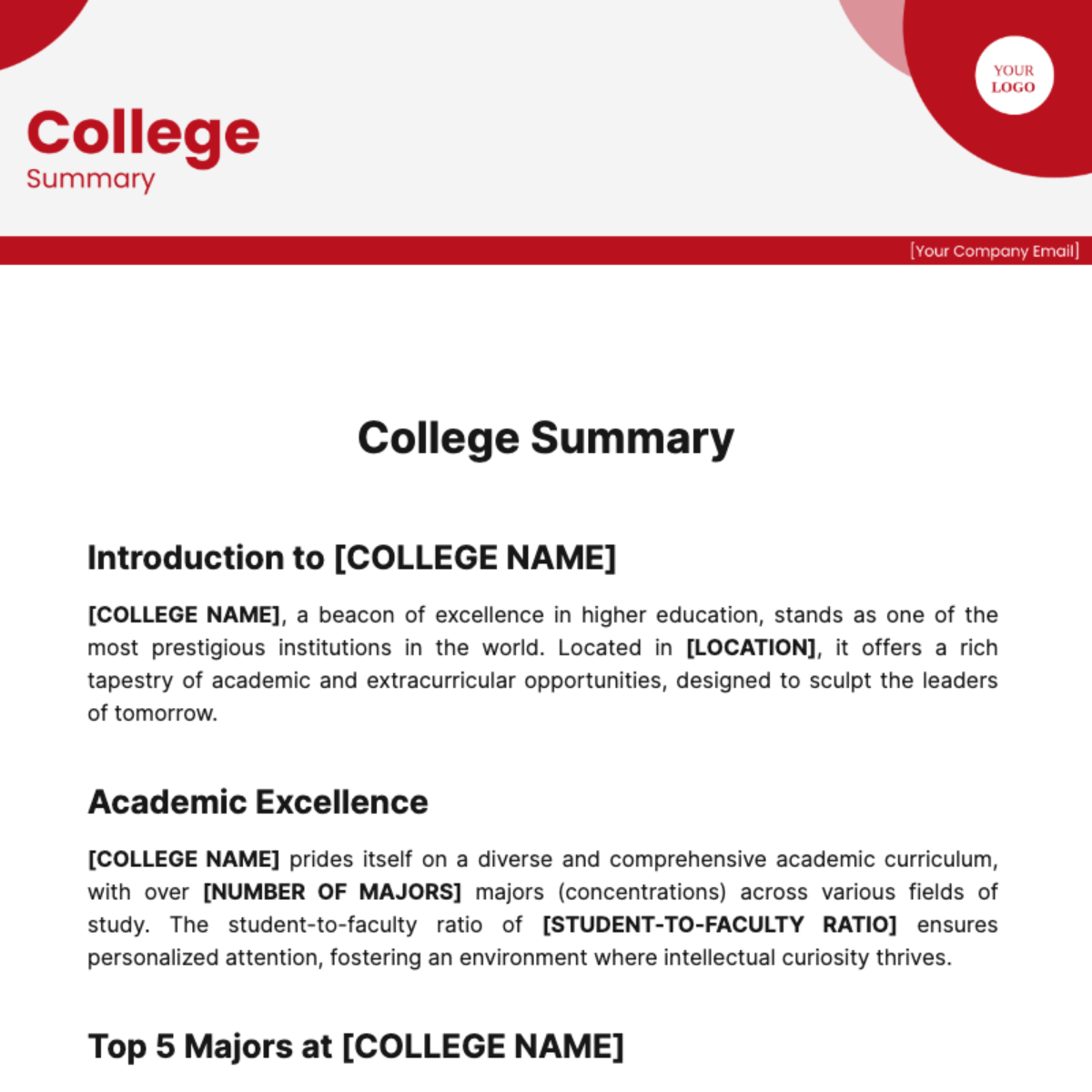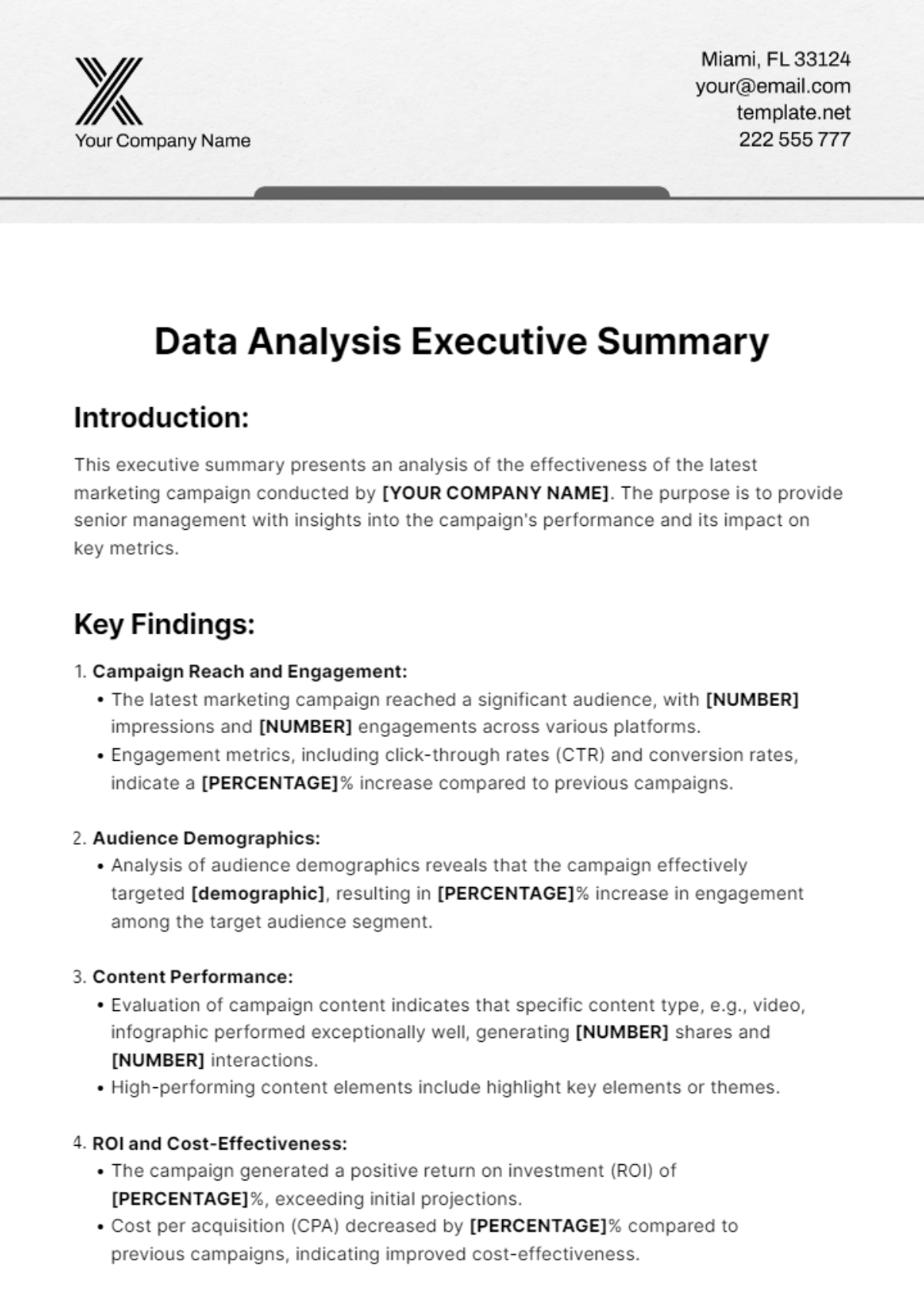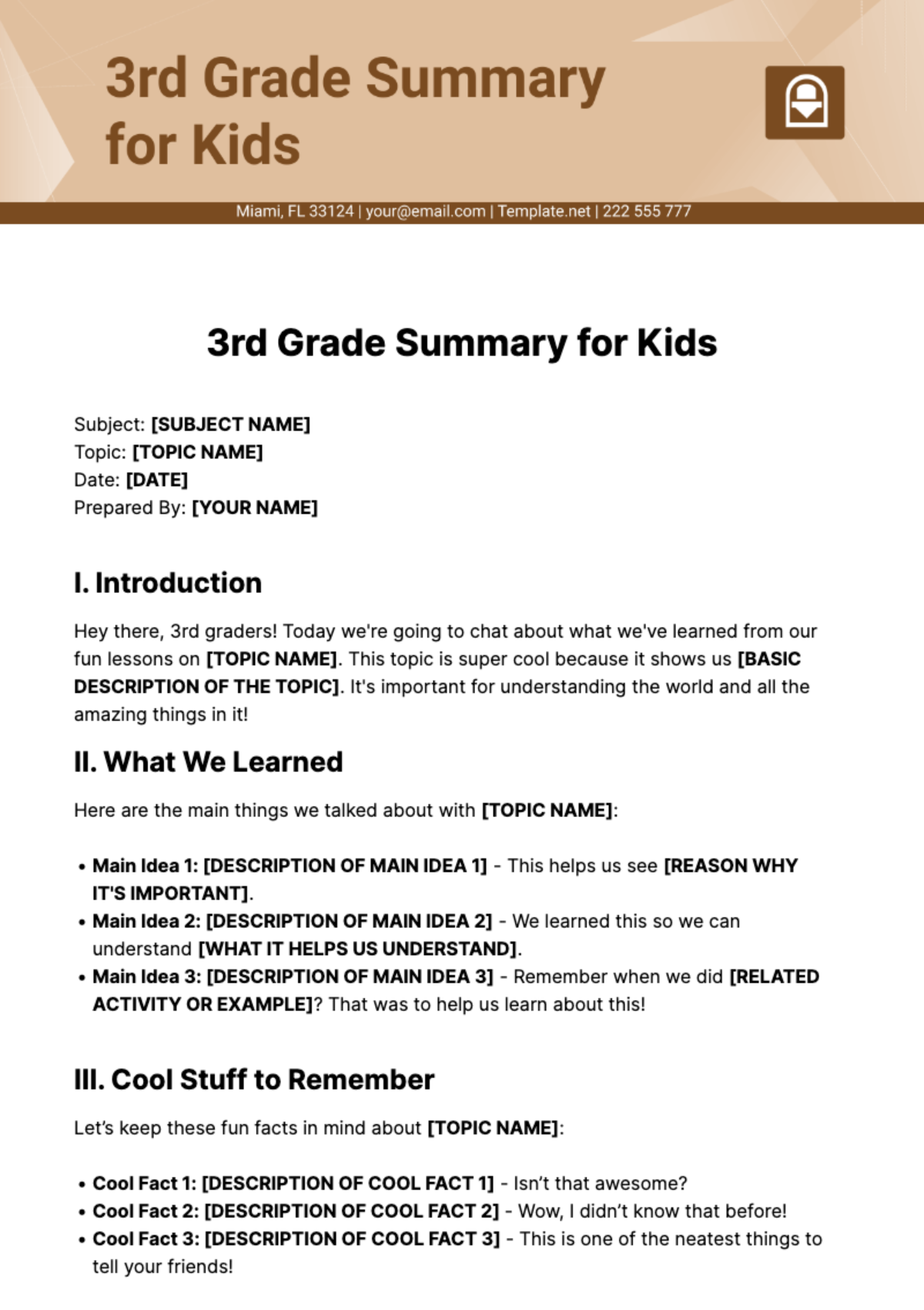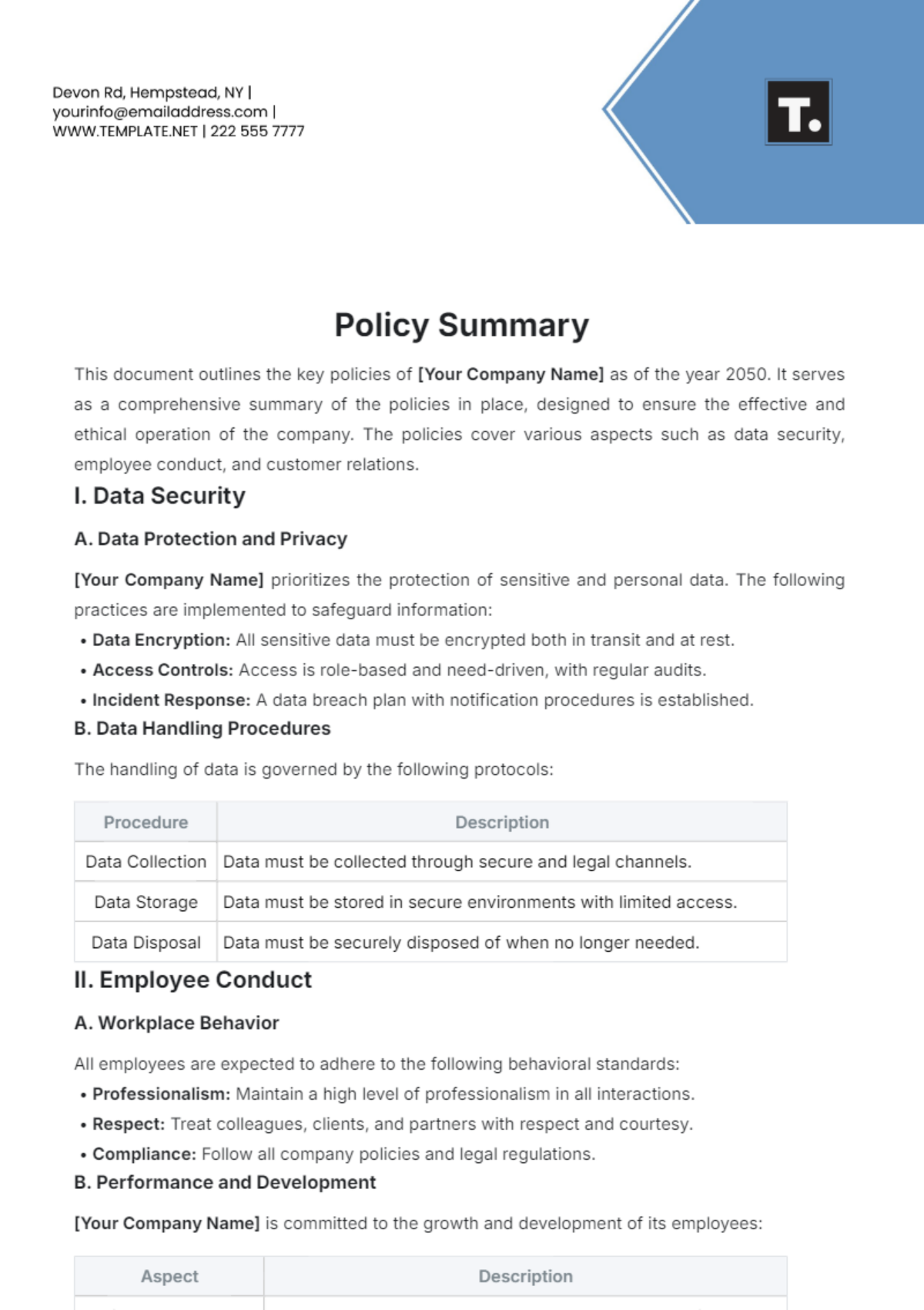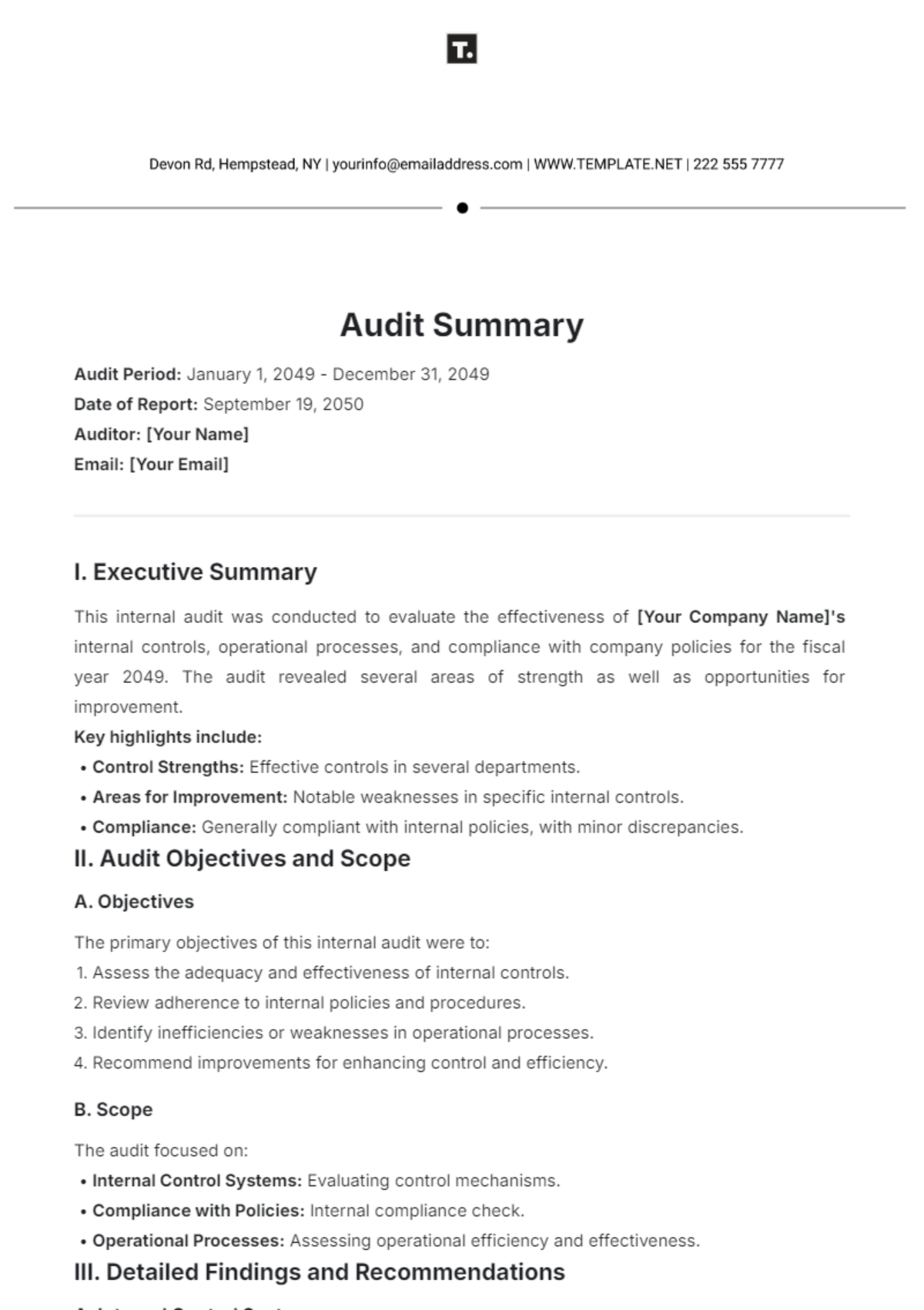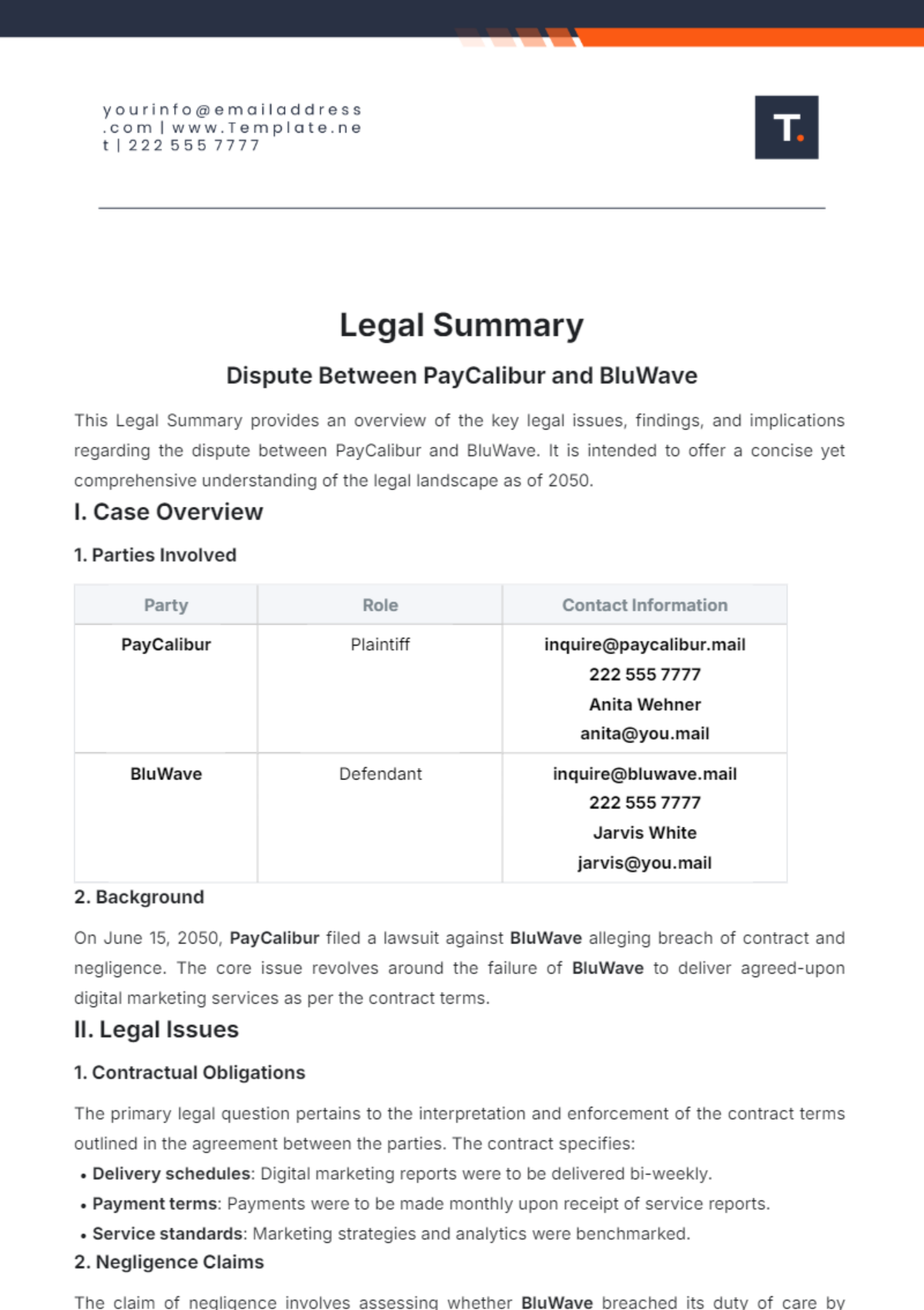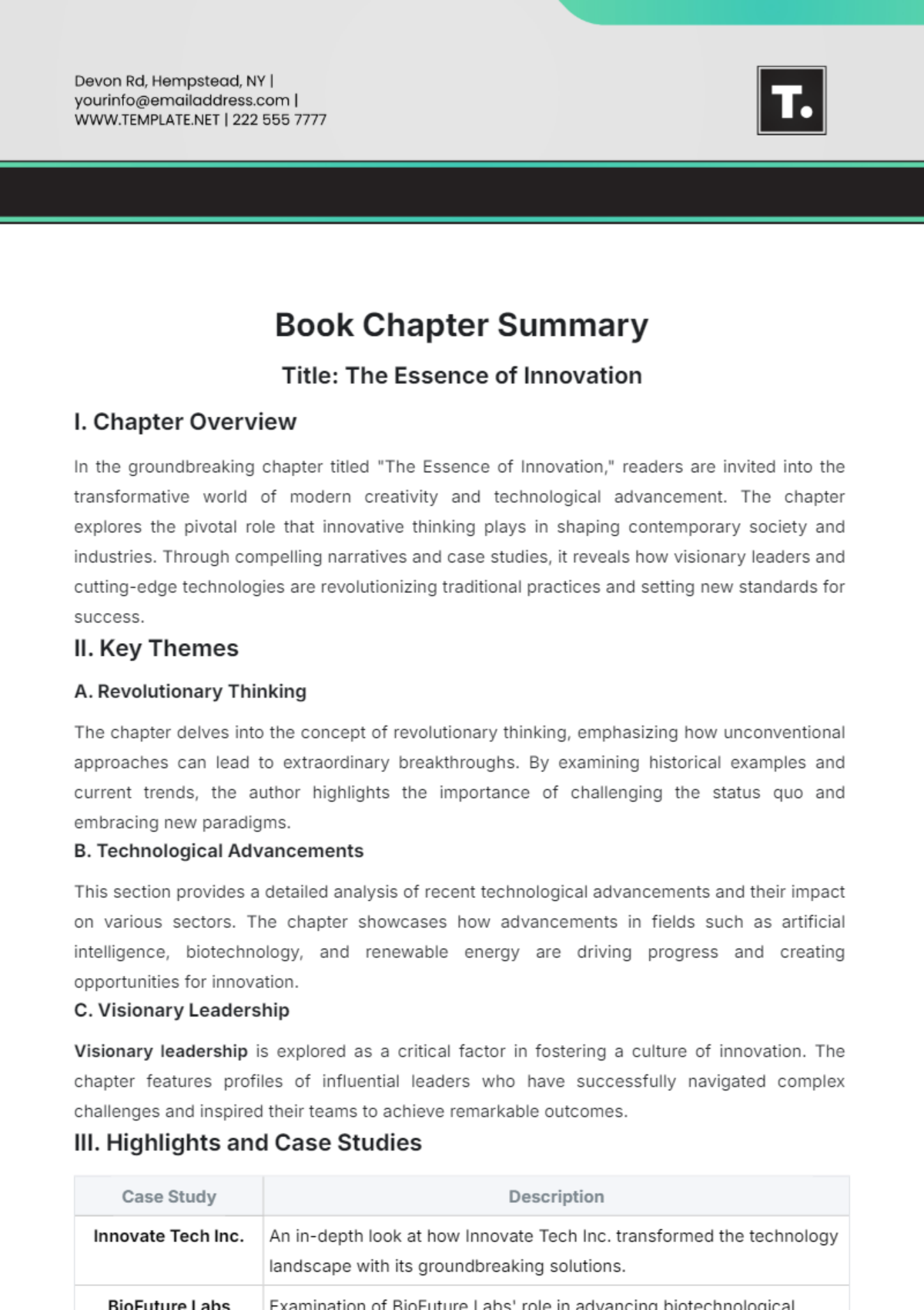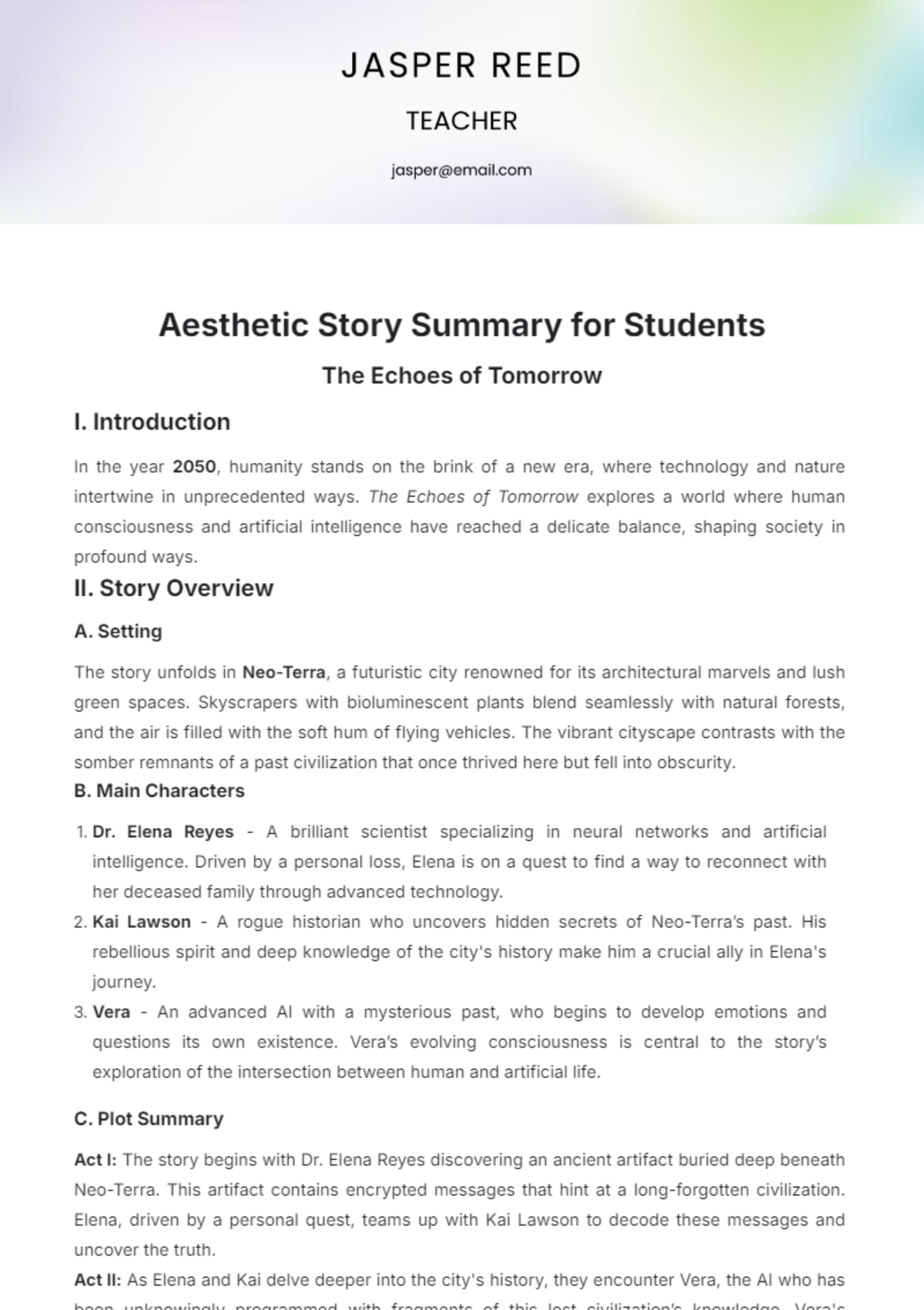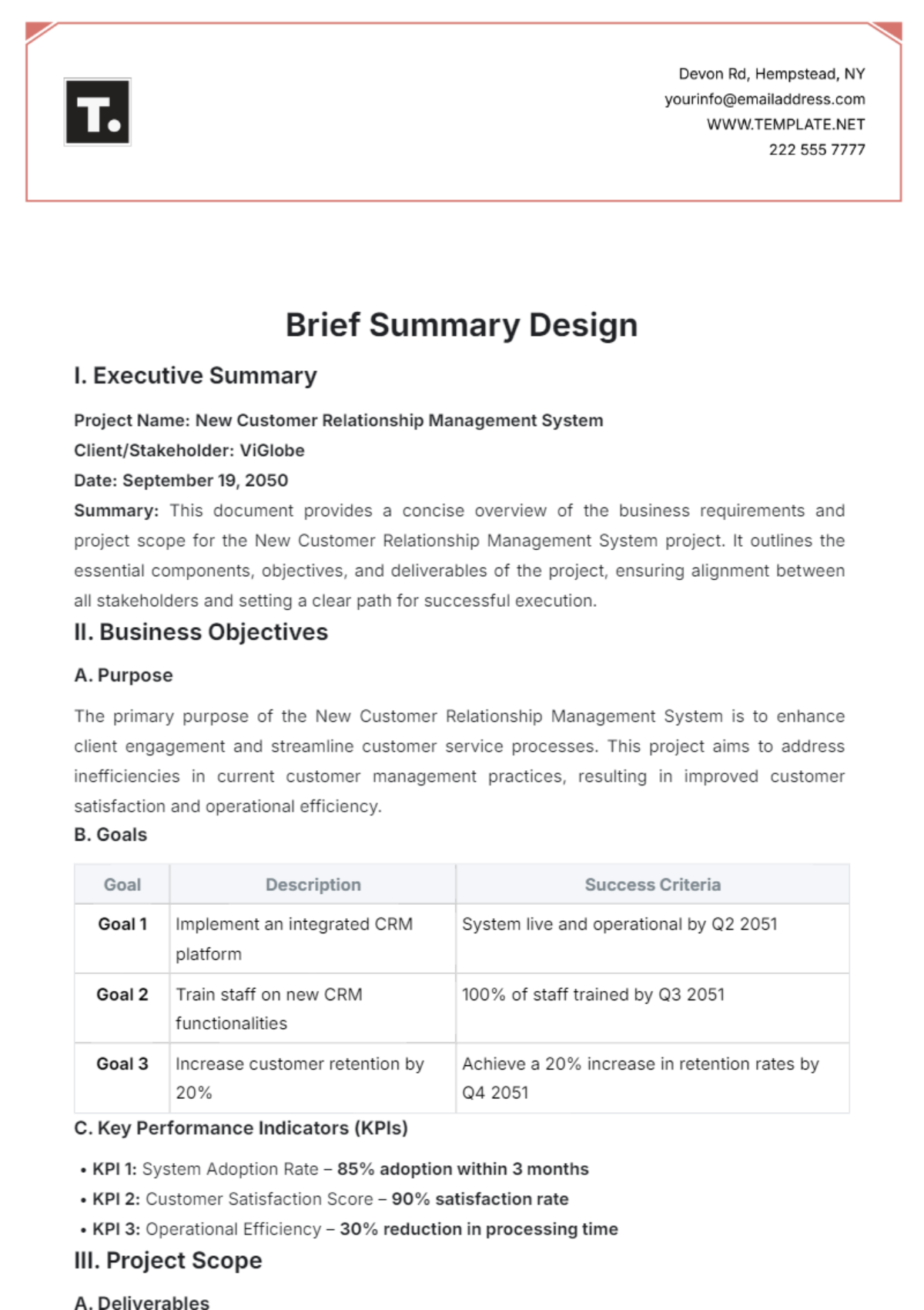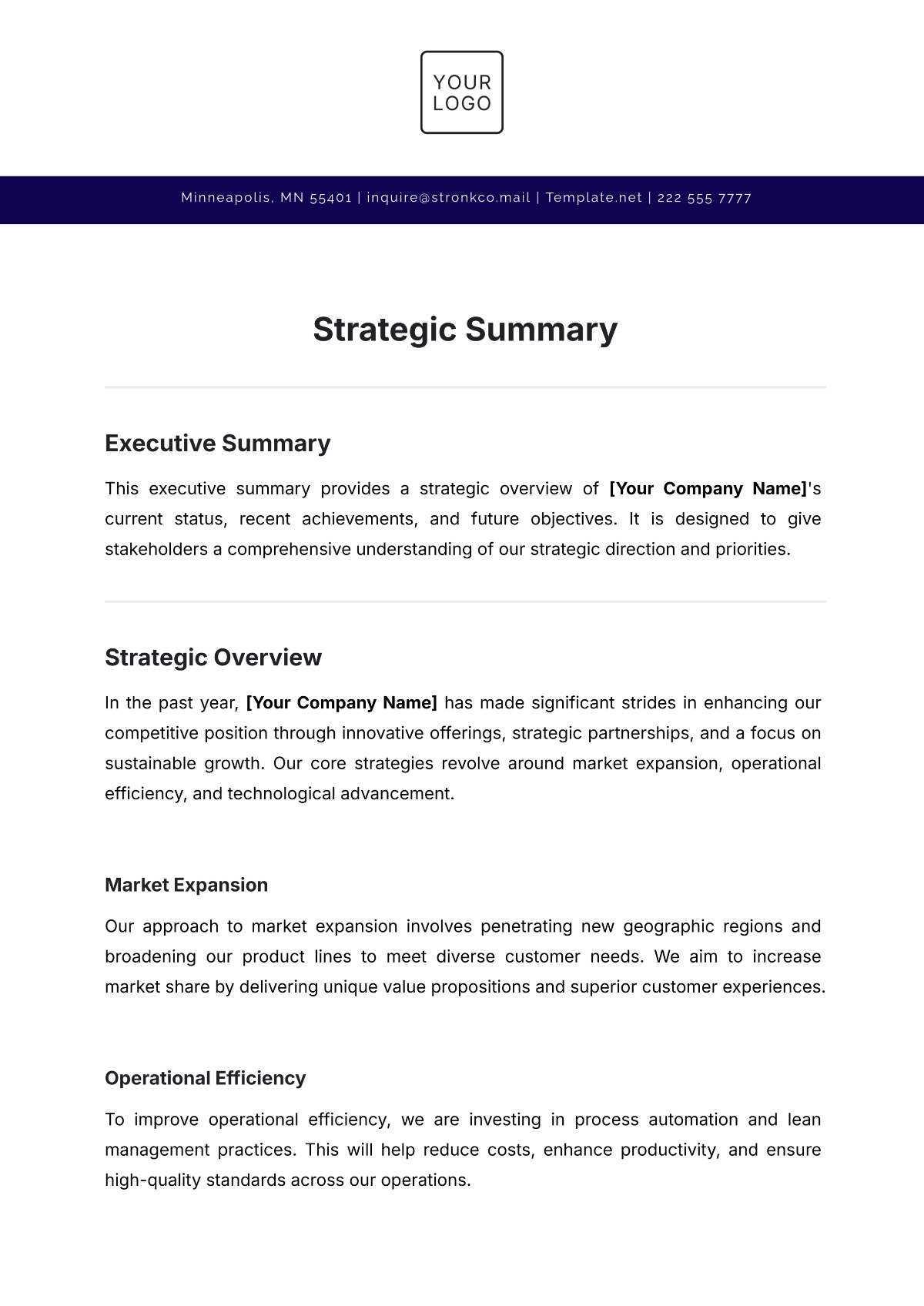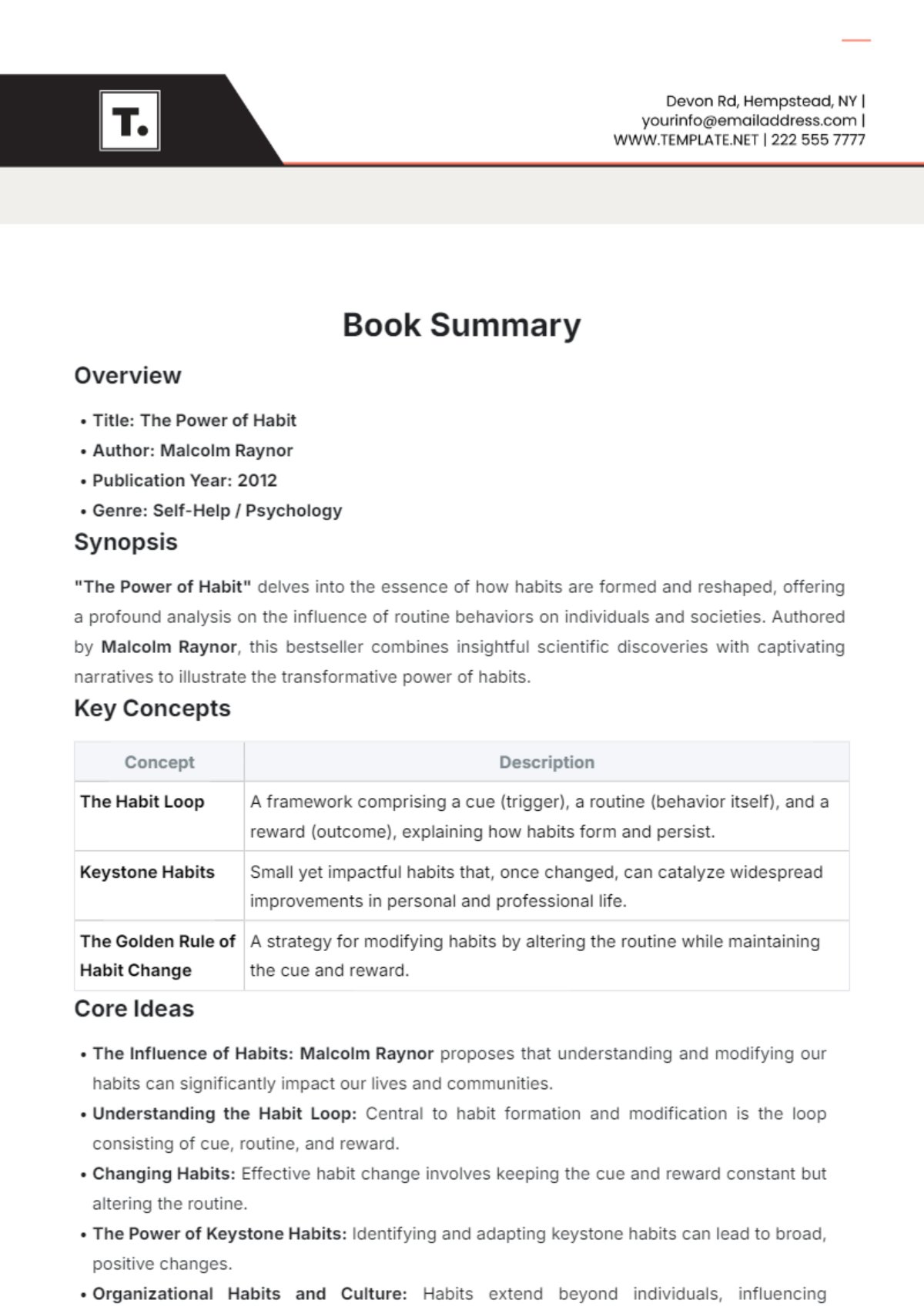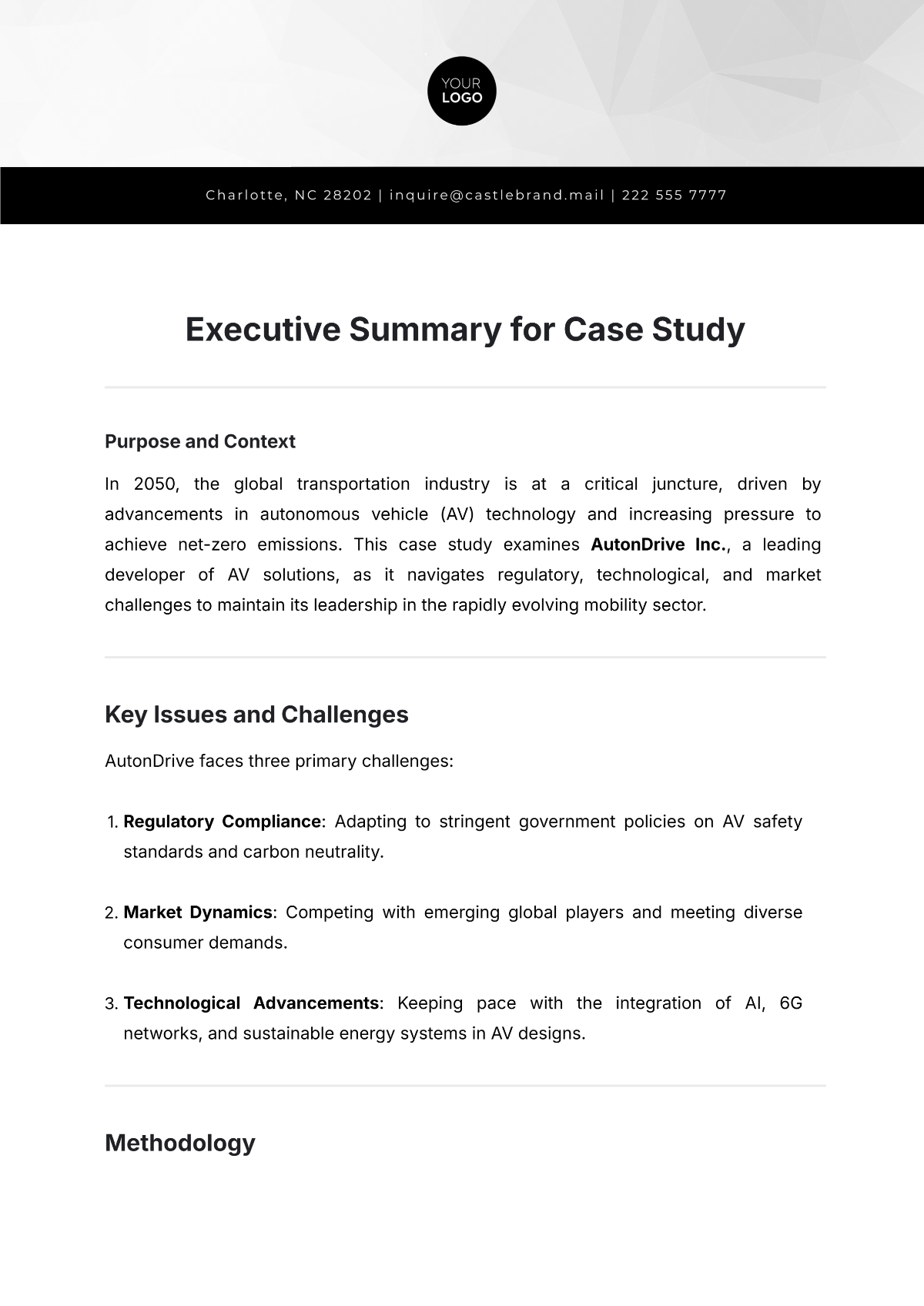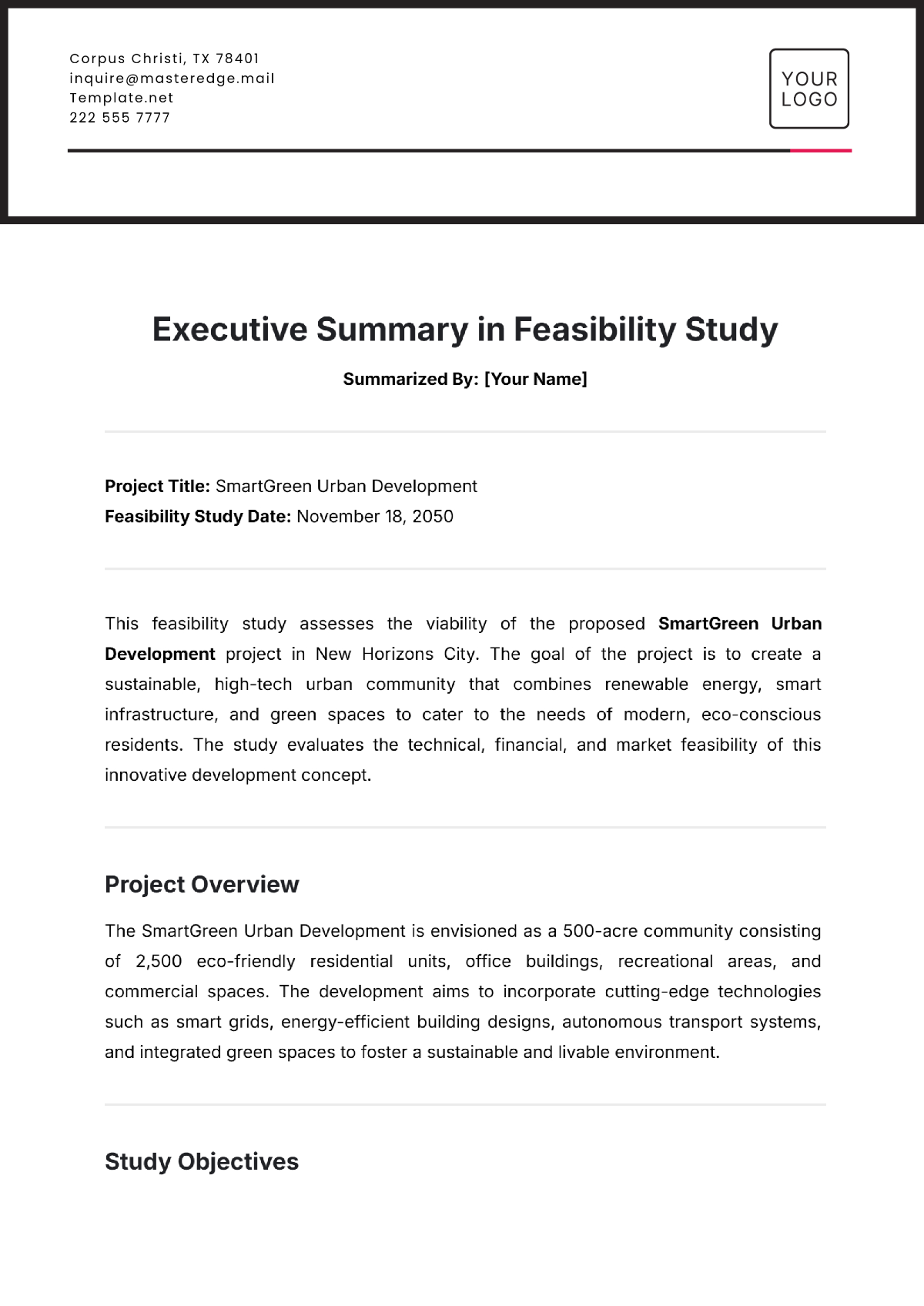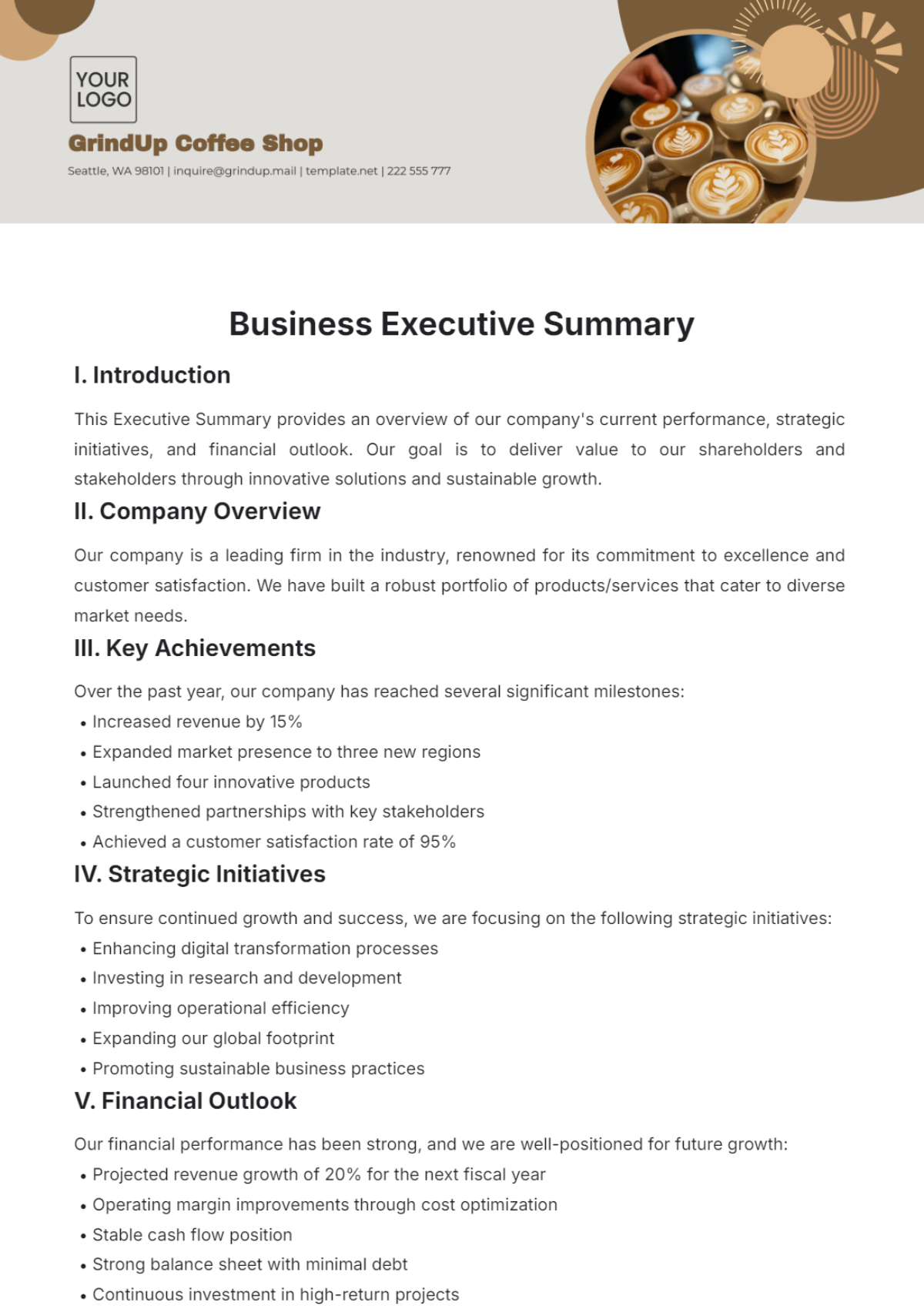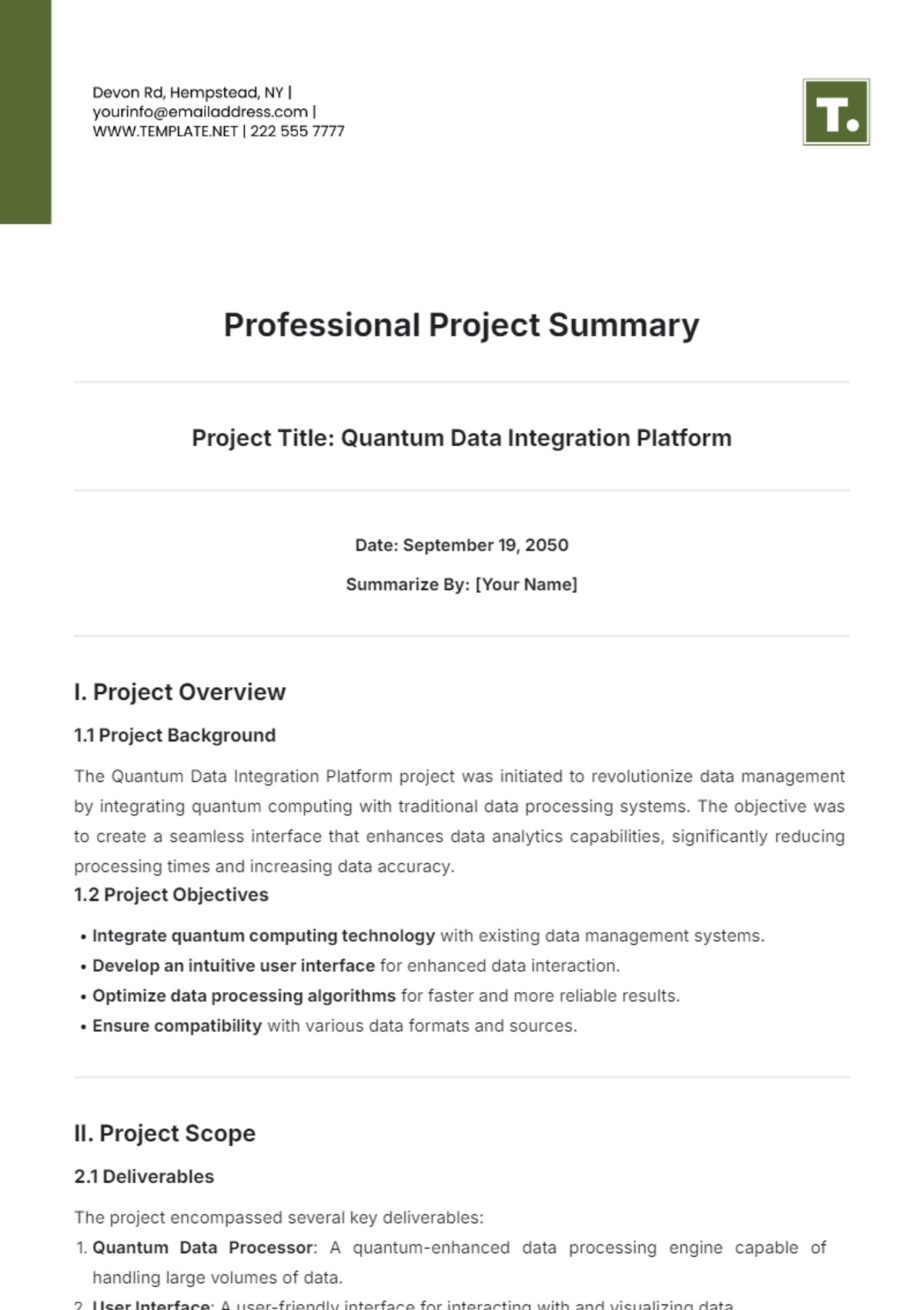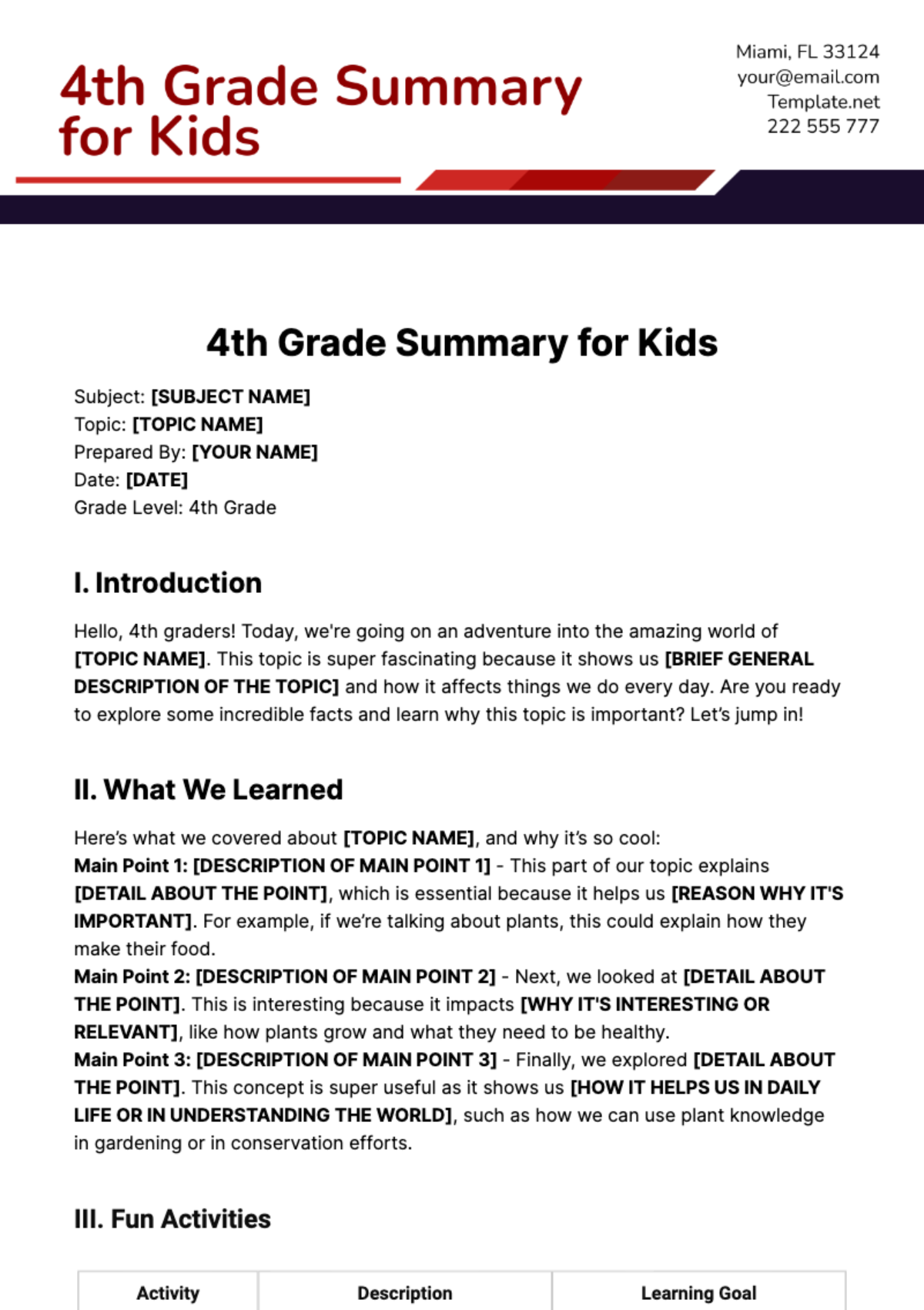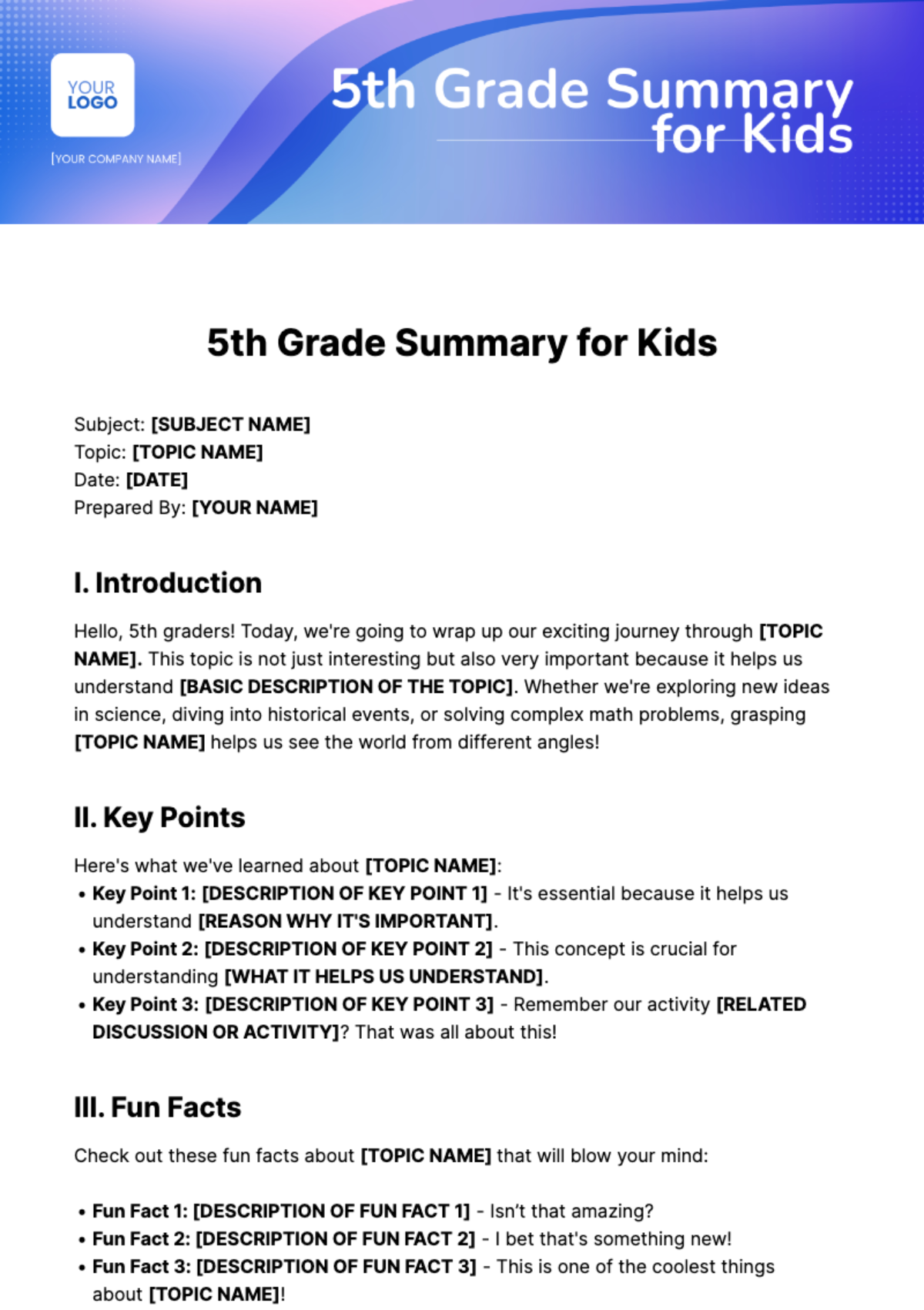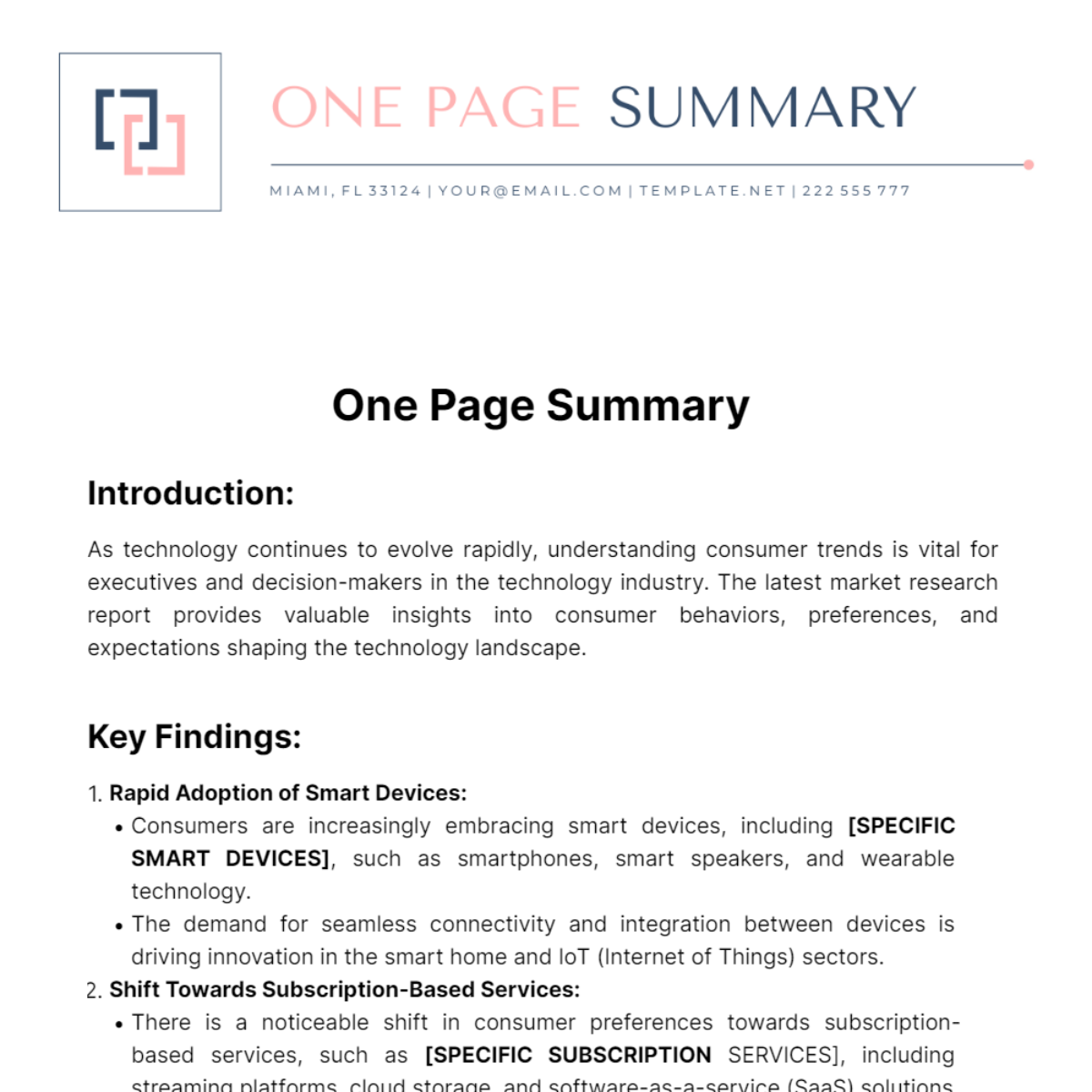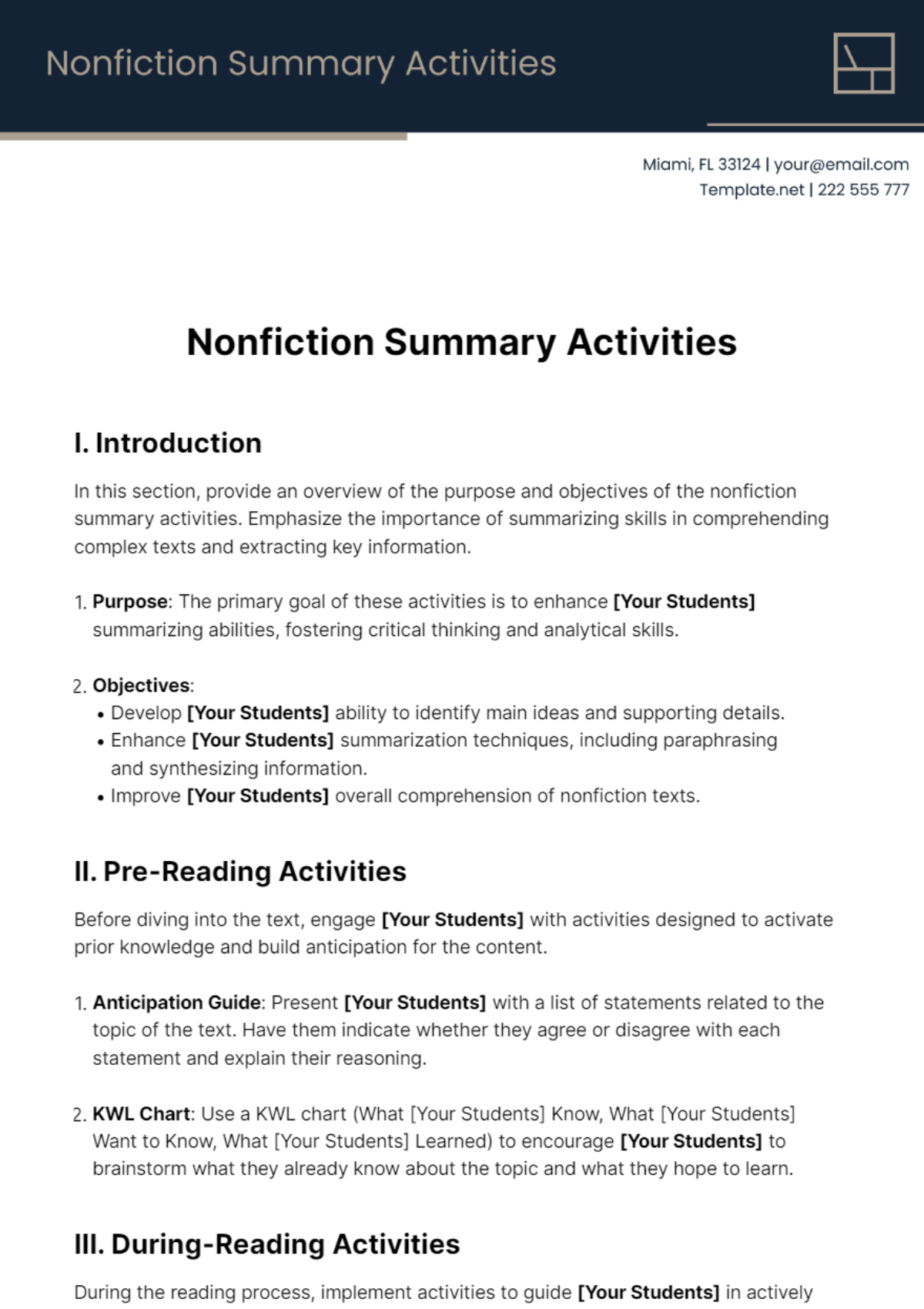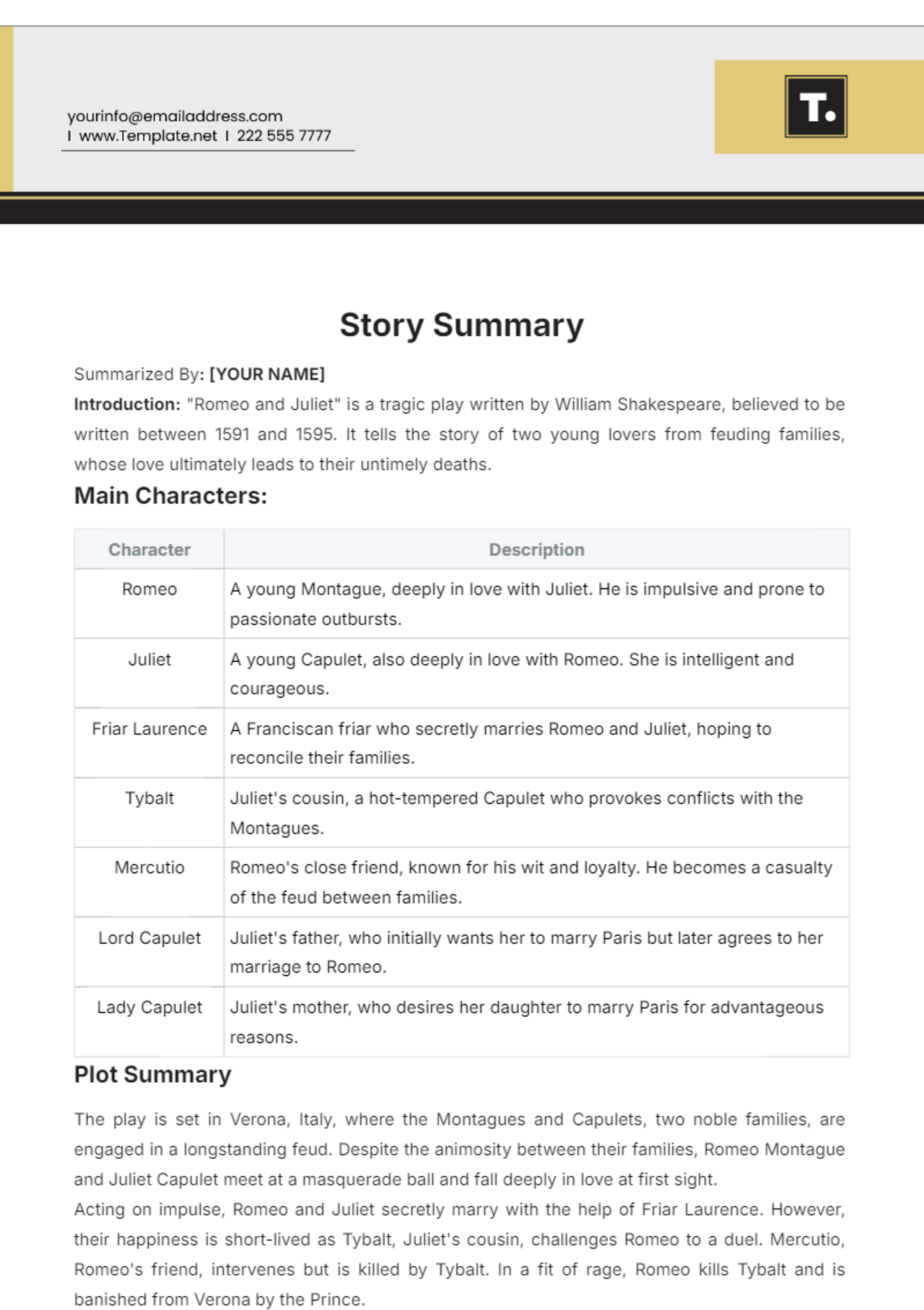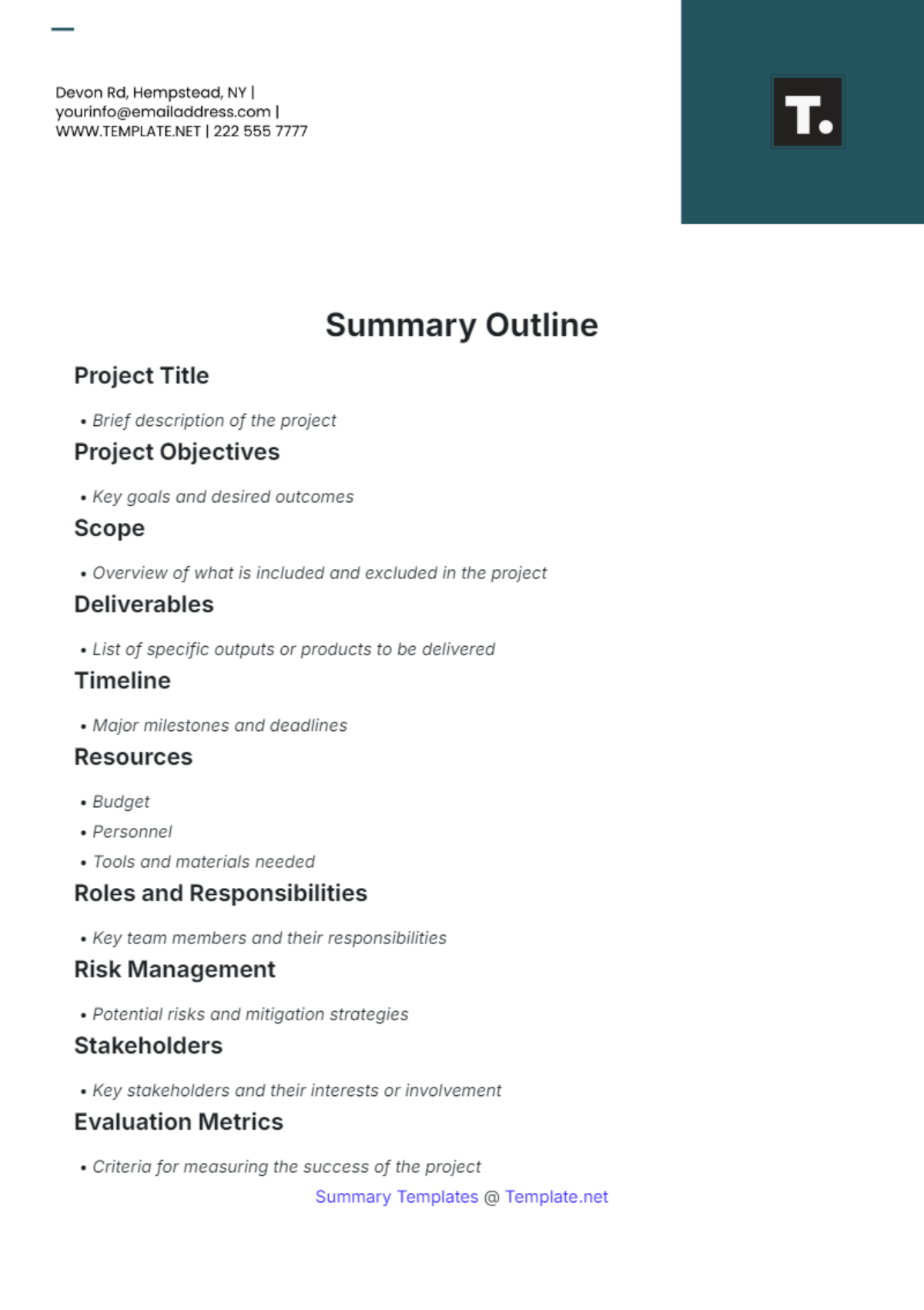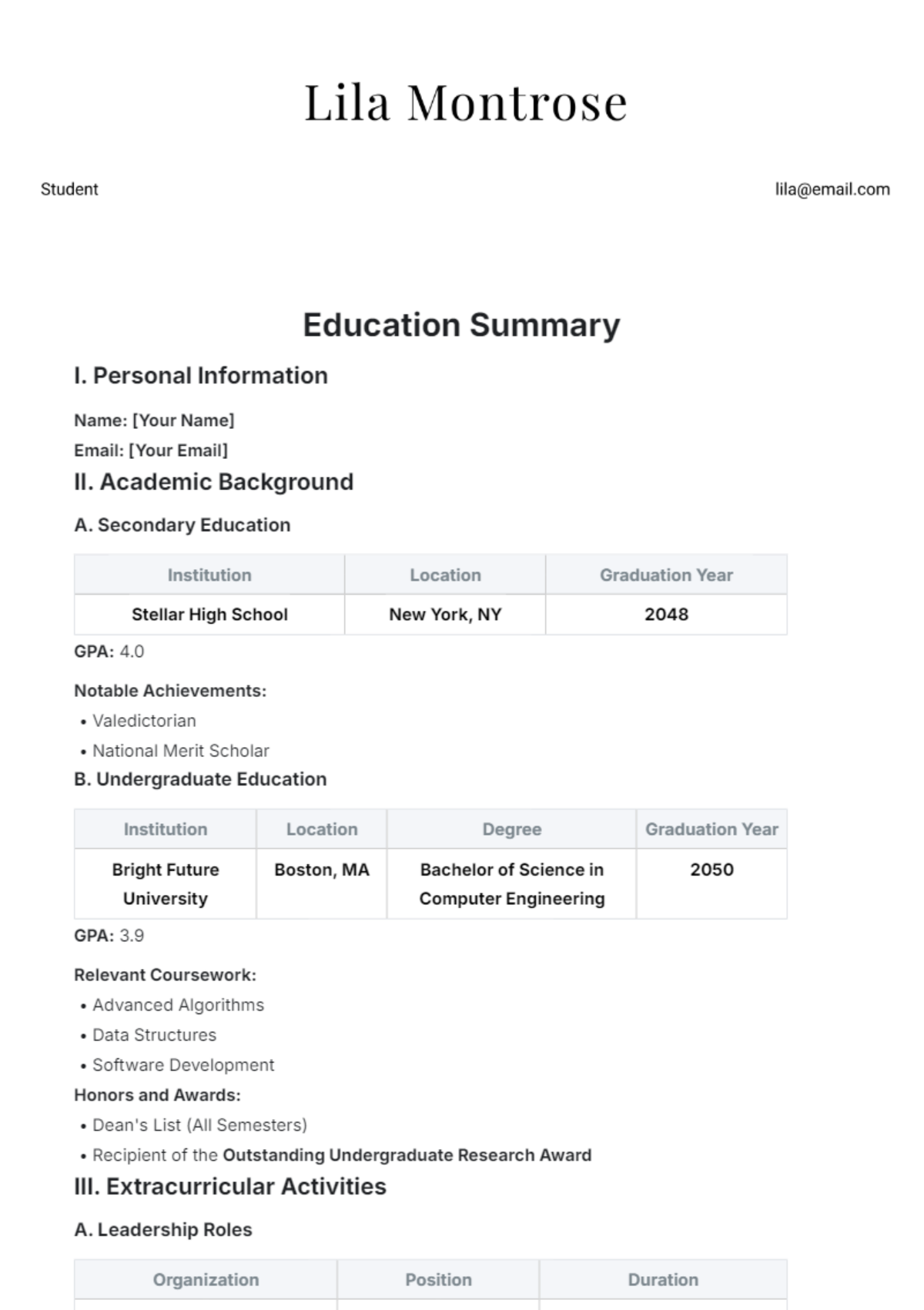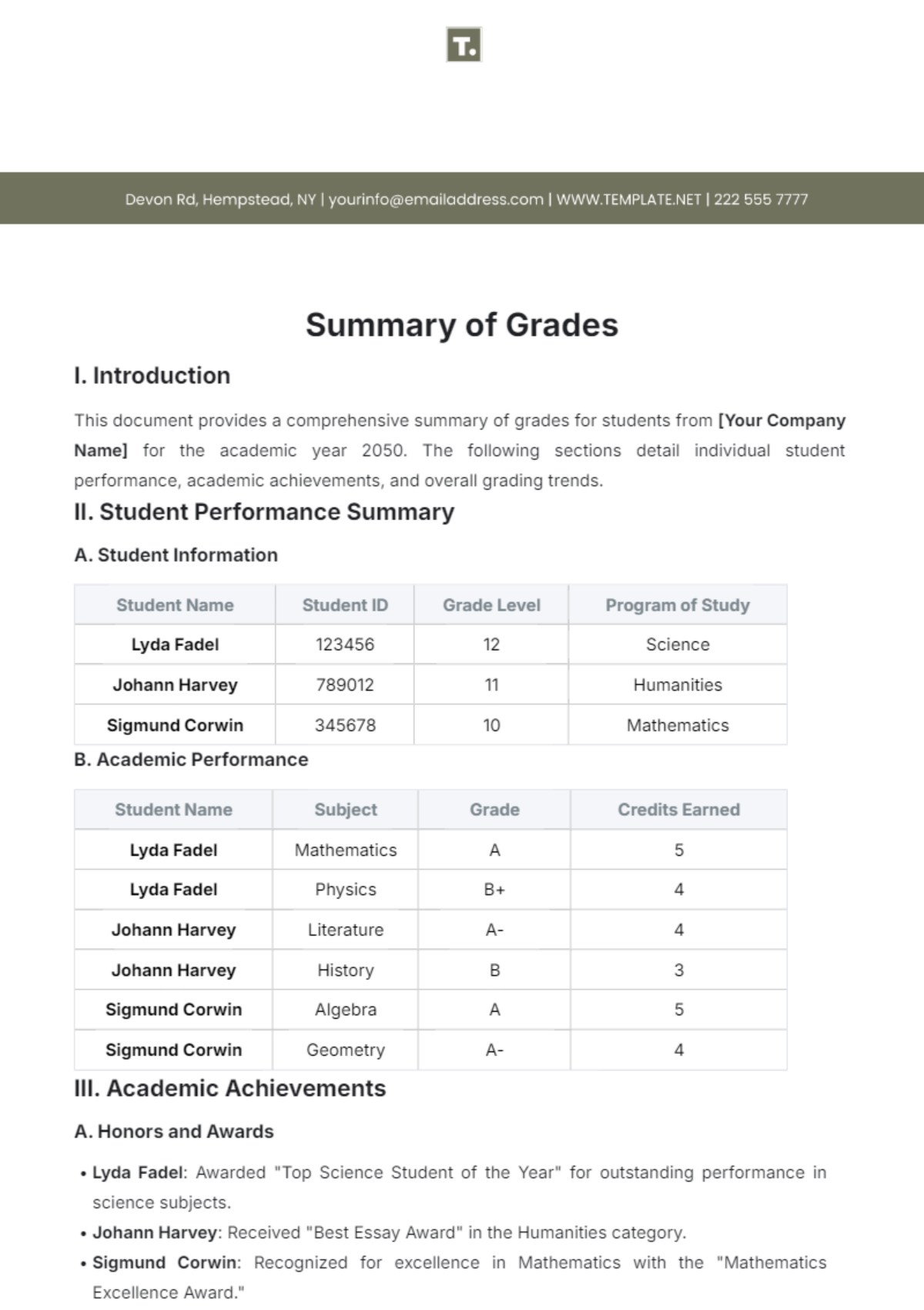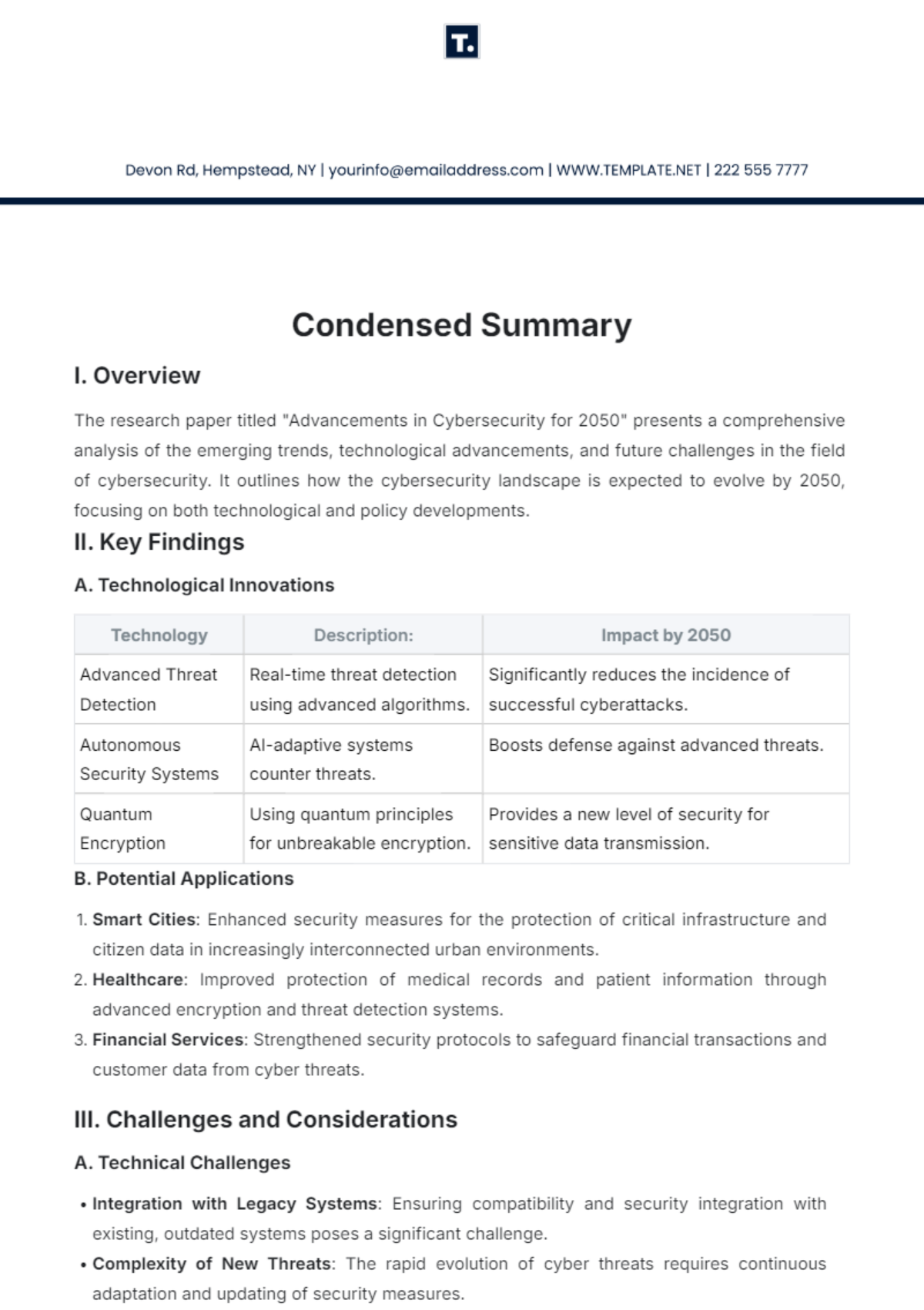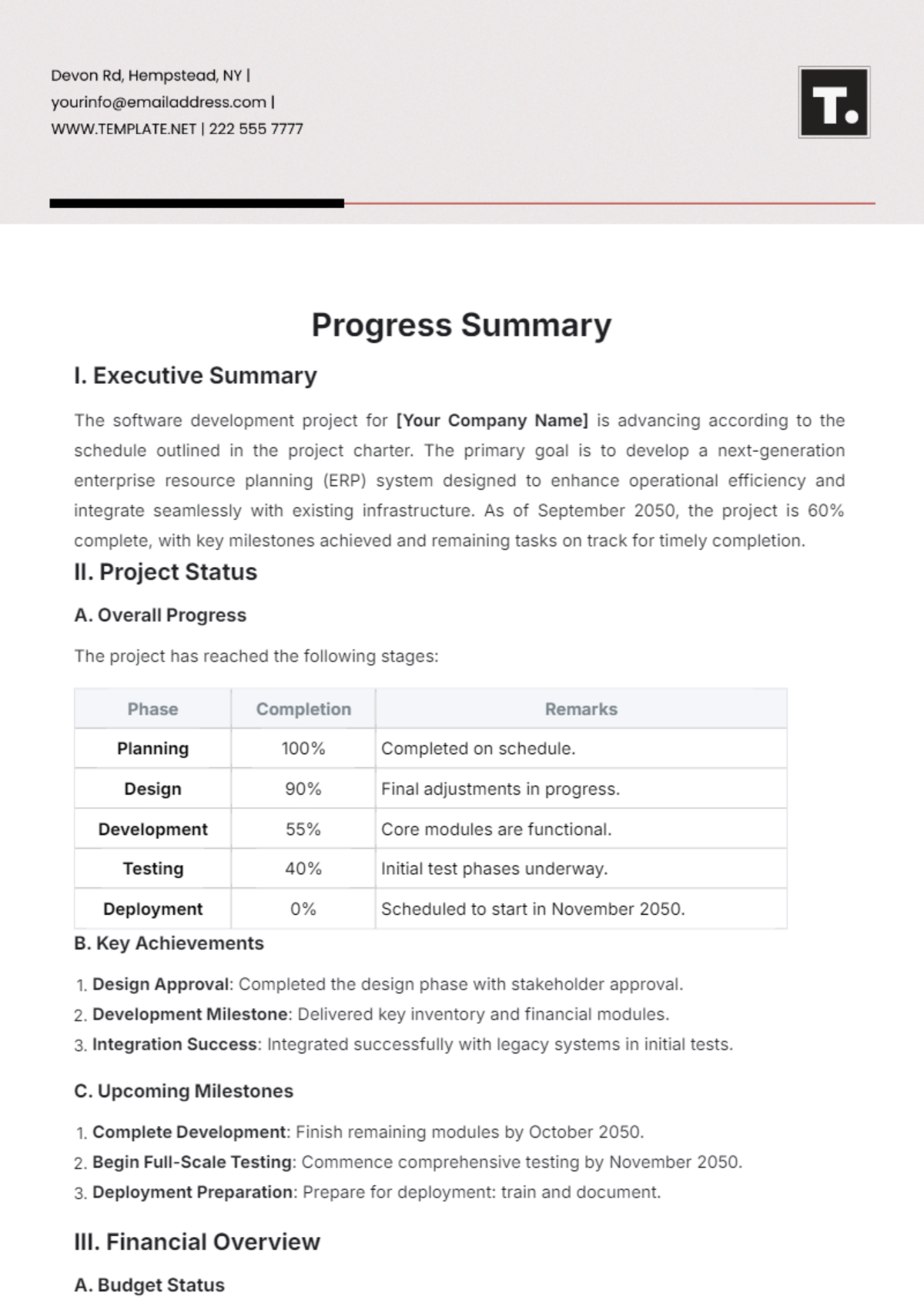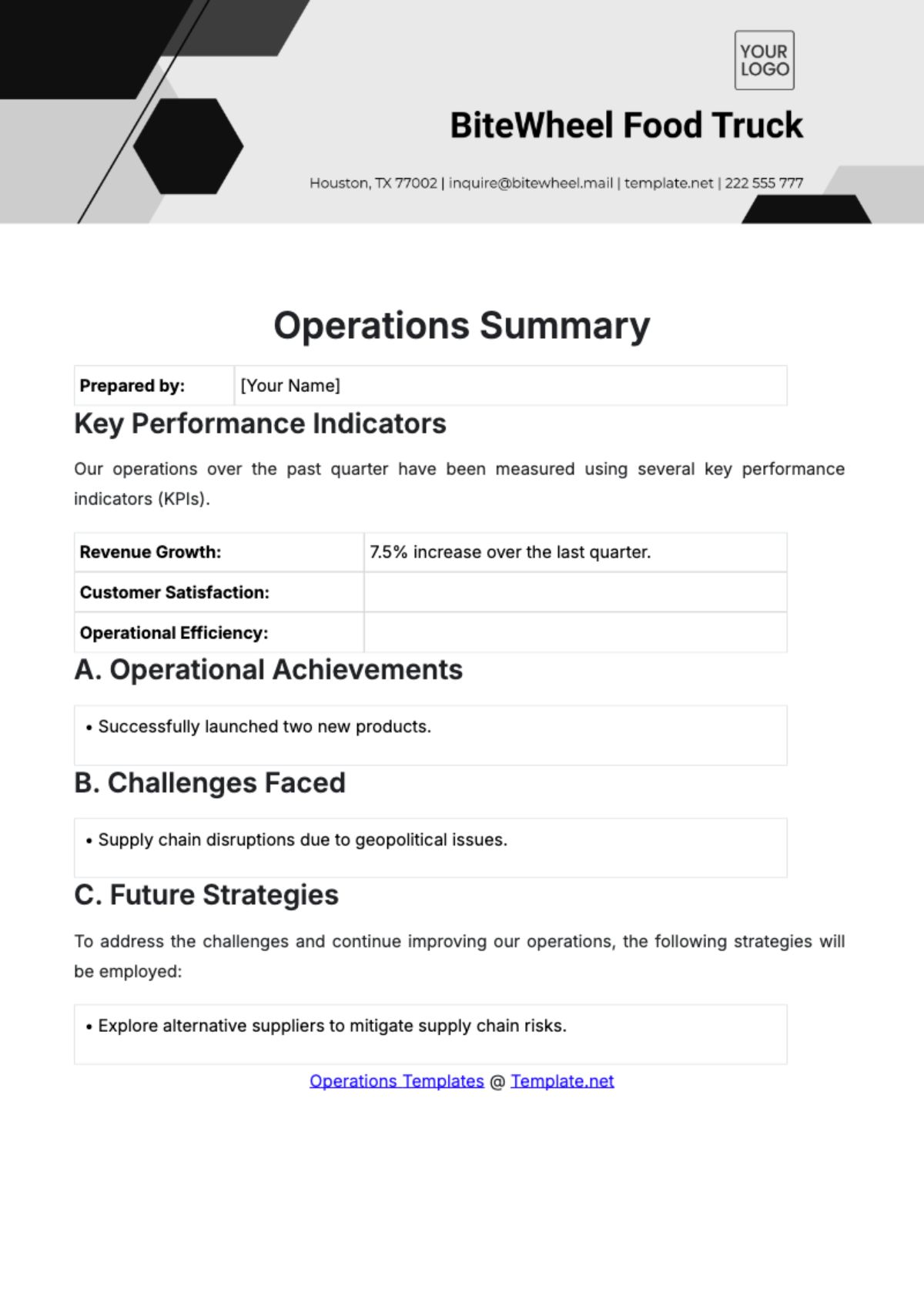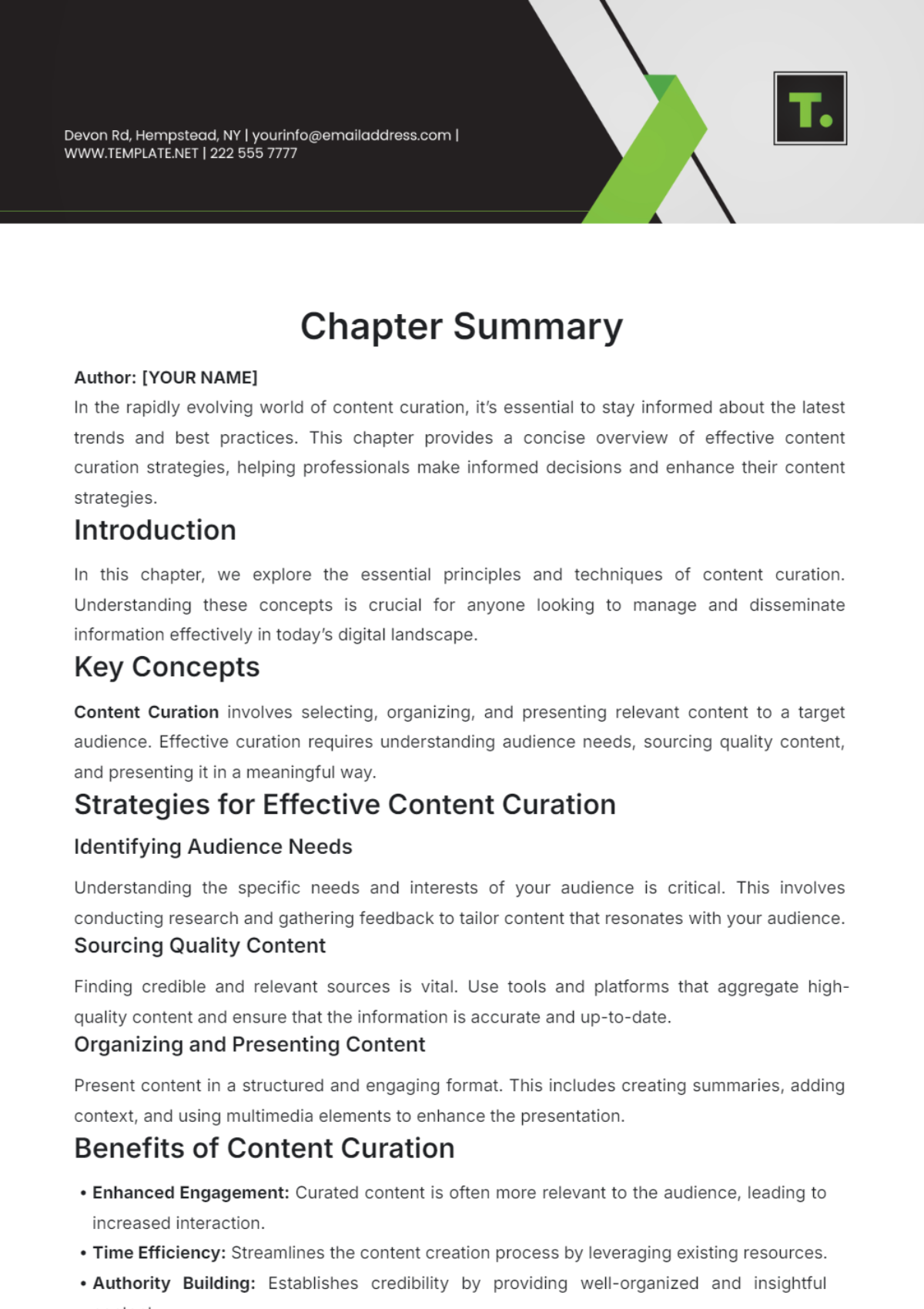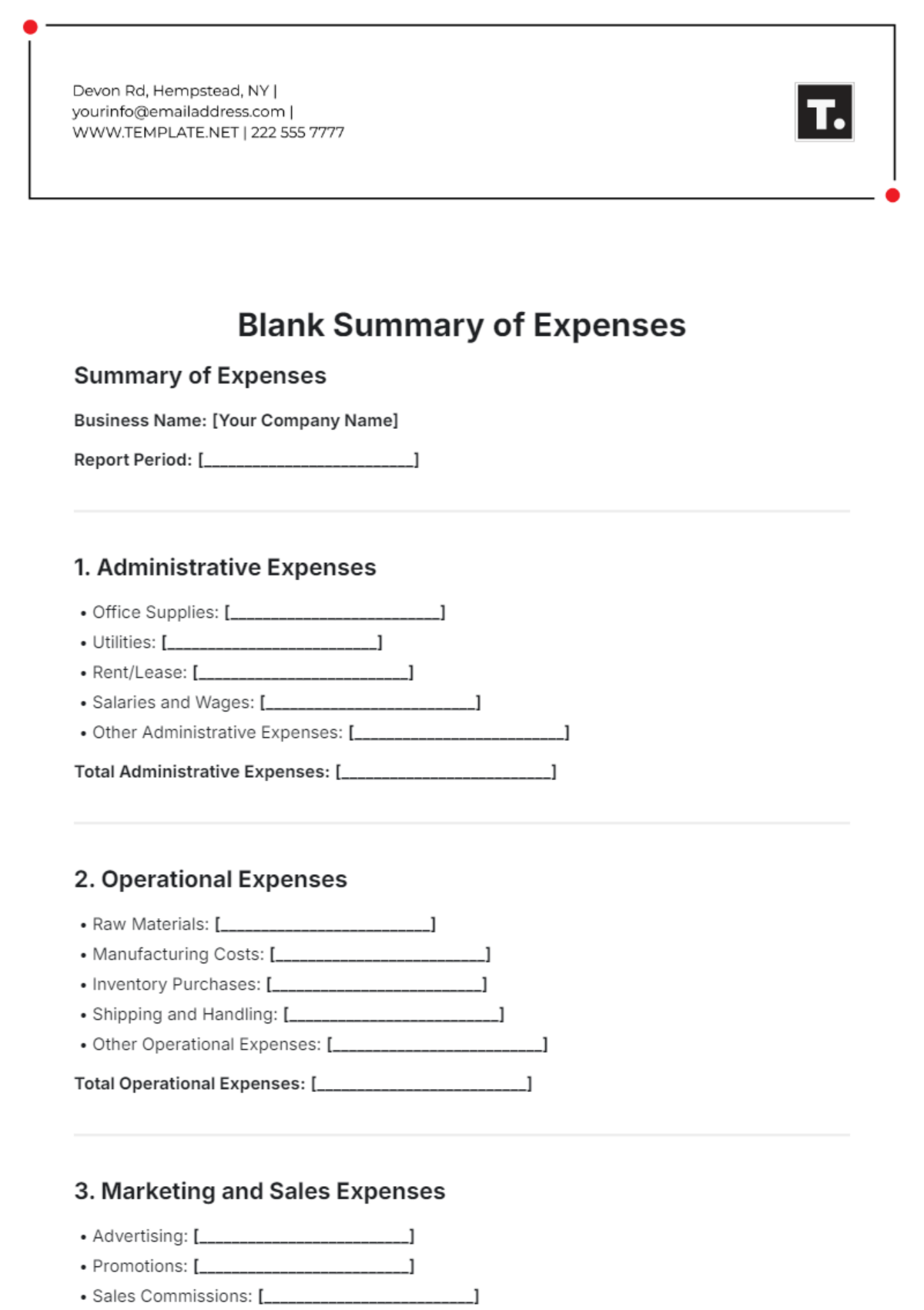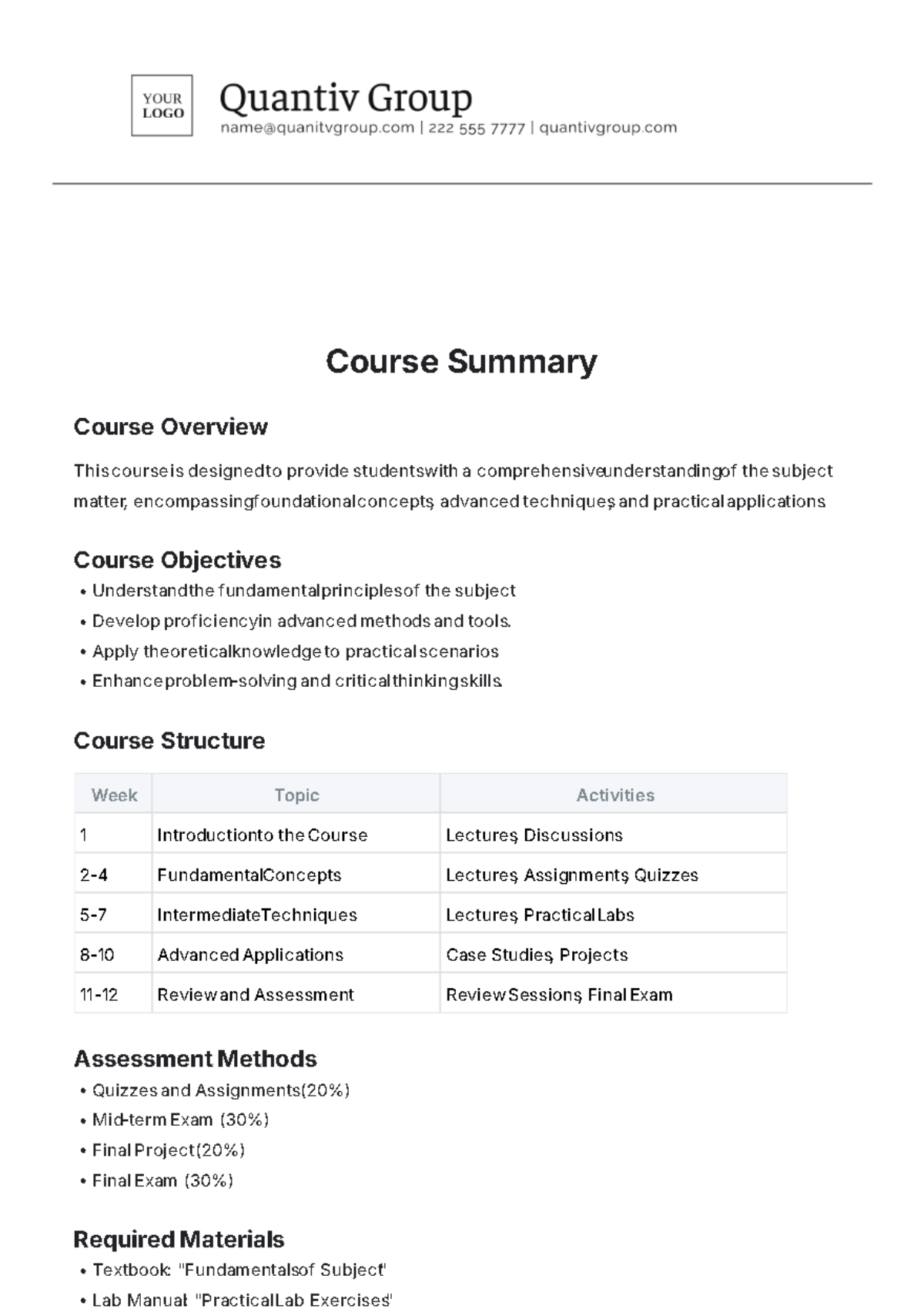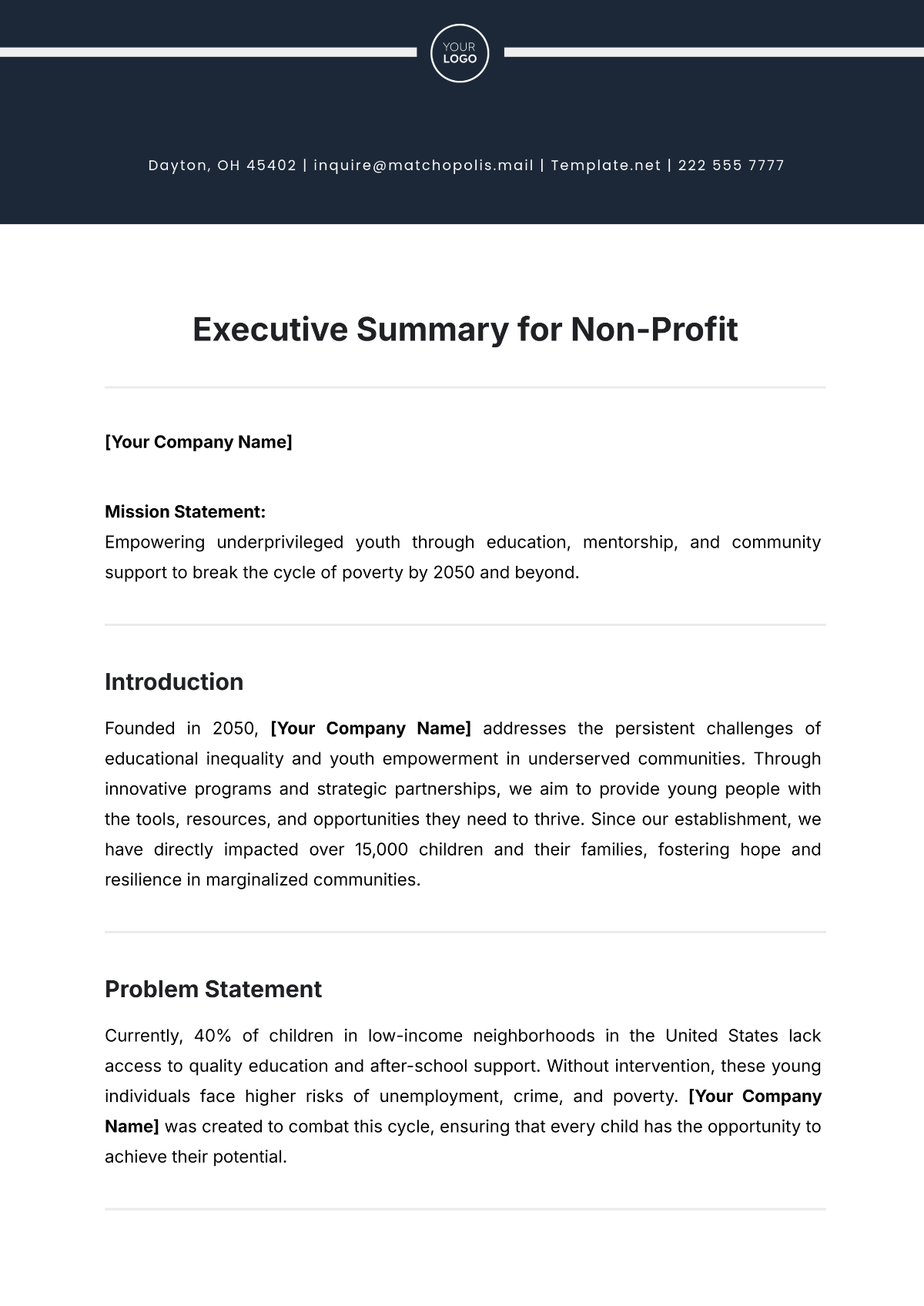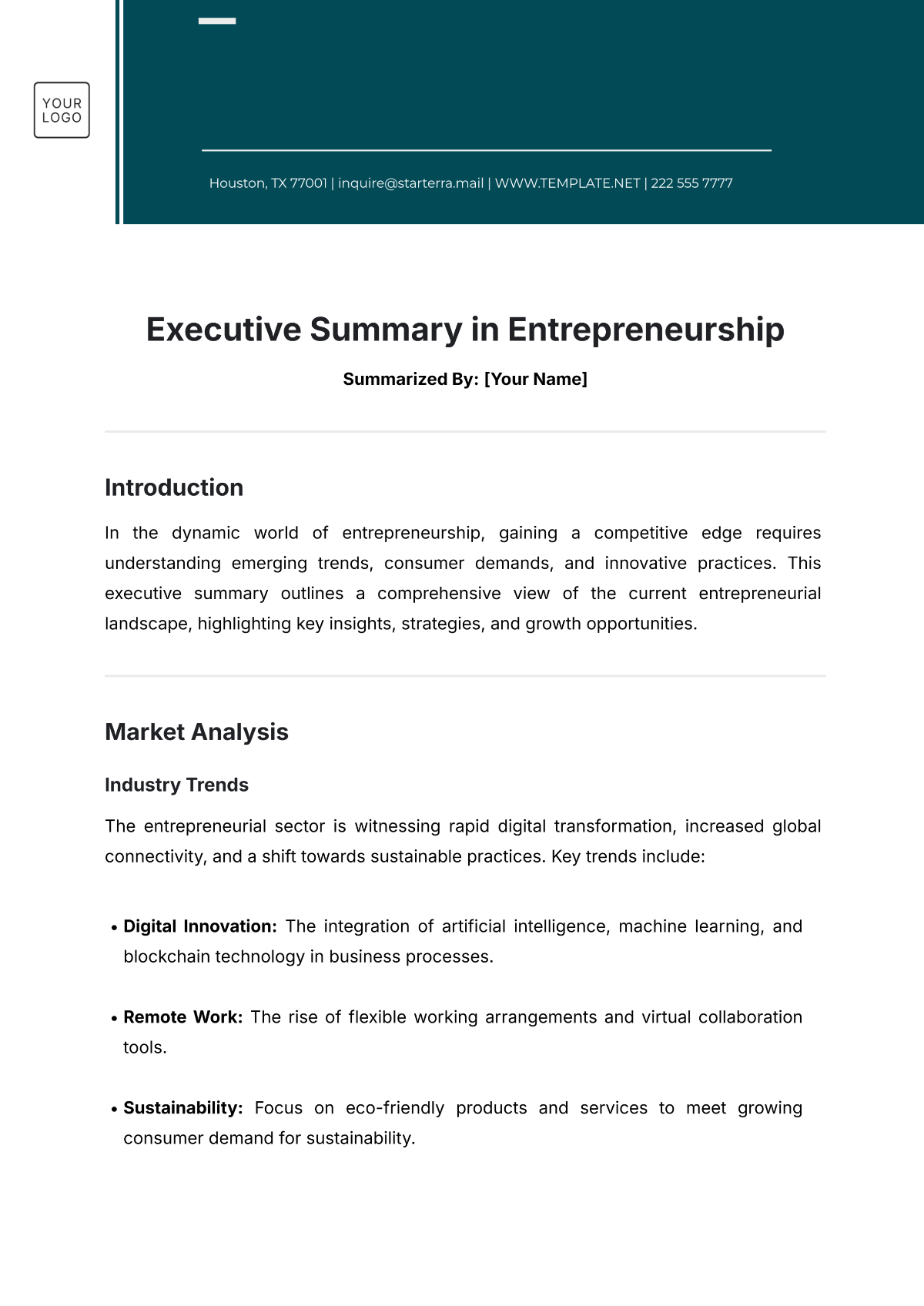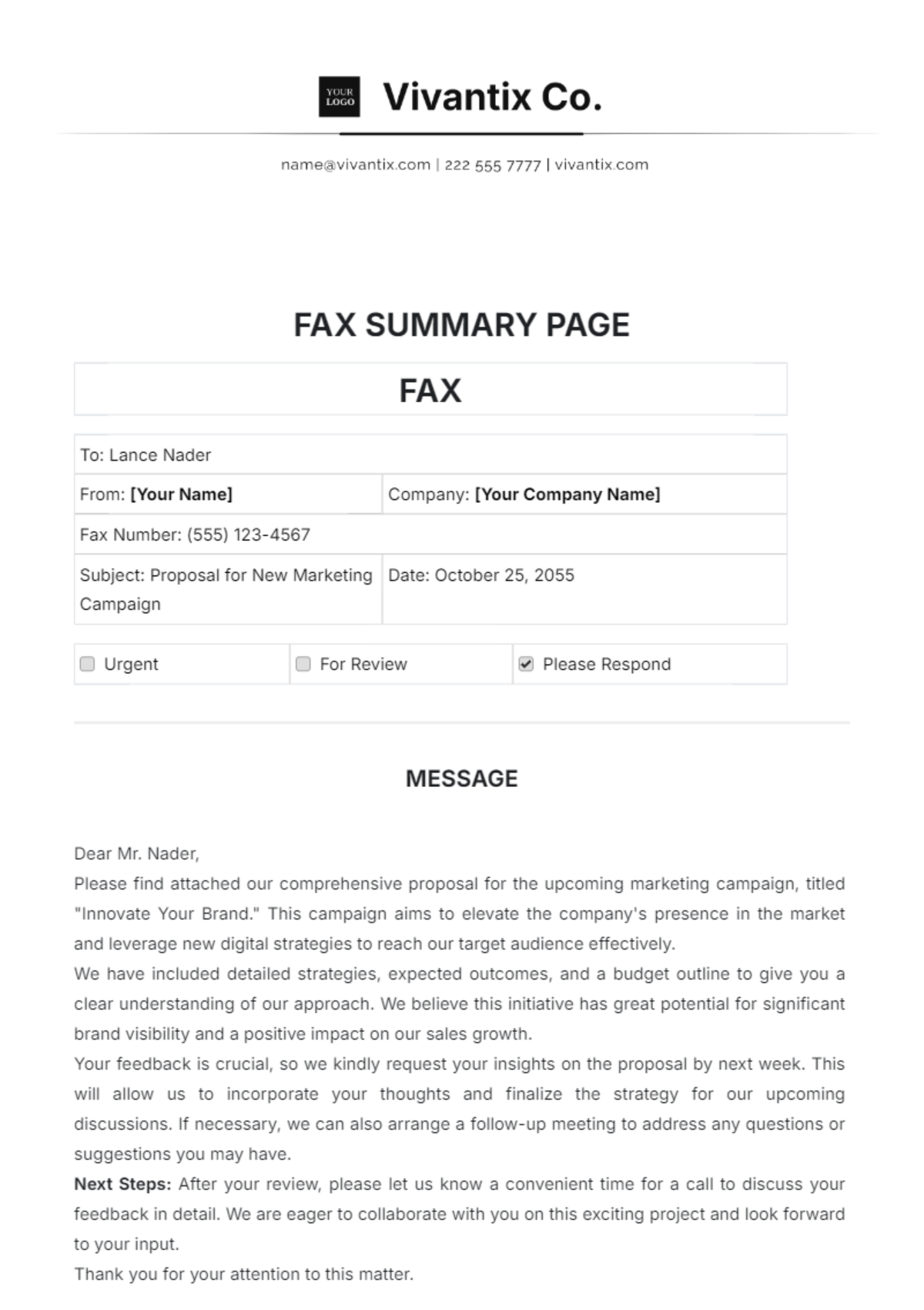Article Summary for Students
I. Article Details
The [ARTICLE TITLE] summary template is designed to assist students in comprehending and analyzing scholarly articles relevant to their studies. The template provides a structured framework for summarizing key points, identifying main arguments, and evaluating the significance of the article in the context of [COURSE SUBJECT].
Article Title: [ARTICLE TITLE]
Author: [AUTHOR NAME]
Publication Date: [PUBLICATION DATE]
Journal: [PUBLICATION NAME]
II. Summary
A. Introduction
The article [ARTICLE TITLE] begins by introducing the topic of [TOPIC] and providing background information on the subject matter. The author(s) highlight the significance of the research, outline the objectives of the study, and present the main argument or hypothesis.
B. Key Findings
In this section, the article presents the key findings derived from the research or analysis conducted. These findings may include empirical results, statistical data, qualitative observations, or theoretical insights. The author(s) discuss the implications of the findings and their relevance to [COURSE SUBJECT] or [TOPIC].
C. Discussion
The discussion section of the article critically examines the results and findings in relation to existing literature and theoretical frameworks. The author(s) analyse the strengths and limitations of the study, address any potential biases or methodological concerns, and offer interpretations or explanations for the observed outcomes.
III. Relevance to Course
A. Integration with Course Material
This section explores how the article aligns with the themes, concepts, and theories covered in [COURSE SUBJECT]. Students reflect on the connections between the article's content and the course curriculum, identifying overlaps, discrepancies, or areas for further exploration.
B. Implications for Learning
The article's findings and discussions have implications for students' understanding and learning in [COURSE SUBJECT]. Students consider how the article contributes to their knowledge and perspectives, and reflect on how they can apply the insights gained to their academic studies or professional practice.
IV. Critical Evaluation
A. Strengths
Students evaluate the strengths of the article, highlighting its contributions to the field, methodological rigout, clarity of presentation, and relevance to current debates or issues. They discuss how the article advances understanding in [TOPIC] and its potential impact on future research or practice.
B. Weaknesses
In this section, students critically assess the limitations or weaknesses of the article, such as sample size, research design, data analysis methods, or theoretical assumptions. They consider alternative perspectives or potential areas for improvement, fostering a deeper understanding of the article's limitations.
V. Application and Reflection
A. Application to Practice
Students reflect on how the insights gained from the article can be applied to real-world scenarios or professional contexts relevant to [COURSE SUBJECT]. They consider practical implications, potential strategies for implementation, and challenges that may arise in applying the findings in practice.
B. Personal Reflection
In this section, students engage in self-reflection, considering their own perspectives, experiences, and opinions in relation to the article. They explore how the article has influenced their thinking, raised new questions, or challenged existing assumptions, fostering critical thinking and intellectual growth.
VI. Recommendations
A. Further Reading
Students recommend additional readings or resources that complement the content of the article and provide further insights into [TOPIC] or related areas of study. They suggest scholarly journals, books, or research papers that expand on the themes explored in the article.
B. Future Research Directions
This section identifies potential areas for future research inspired by the article's findings or unanswered questions raised by the study. Students propose research questions, methodologies, or theoretical frameworks that could advance understanding in [TOPIC] and contribute to ongoing scholarly discourse.
VII. Conclusion
The [ARTICLE TITLE] summary template provides students with a systematic approach to summarizing, analyzing, and evaluating scholarly articles in [COURSE SUBJECT] or [TOPIC]. By engaging with the content of the article, students deepen their understanding of key concepts, enhance their critical thinking skills, and broaden their perspectives on relevant issues in their field of study.
Summarized By: [YOUR NAME]
